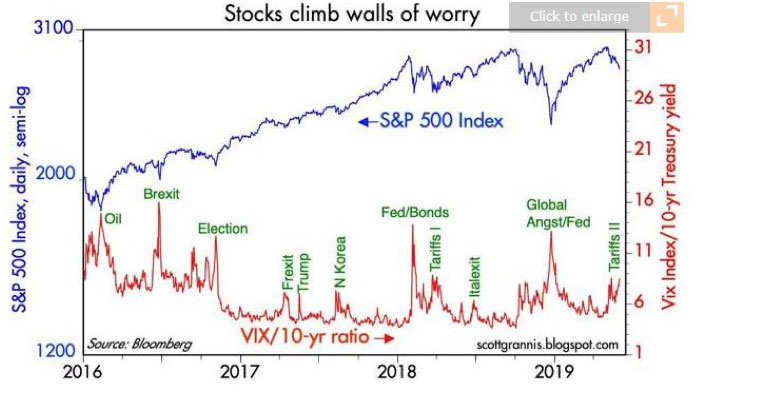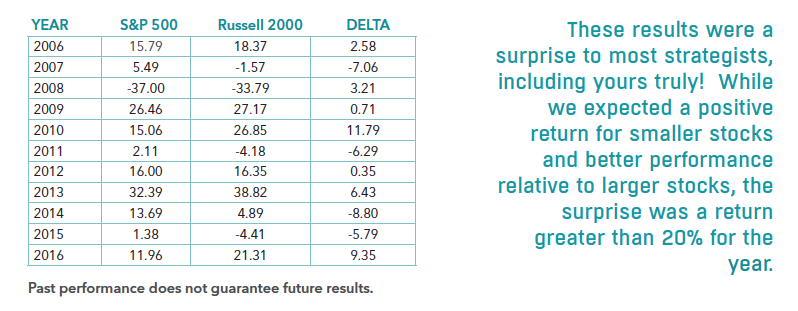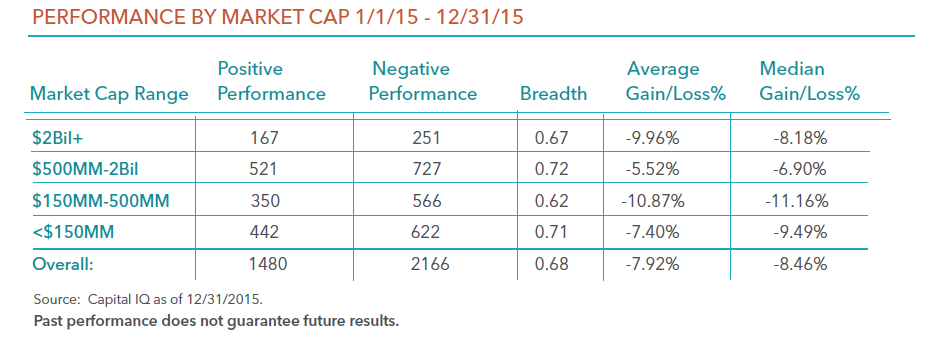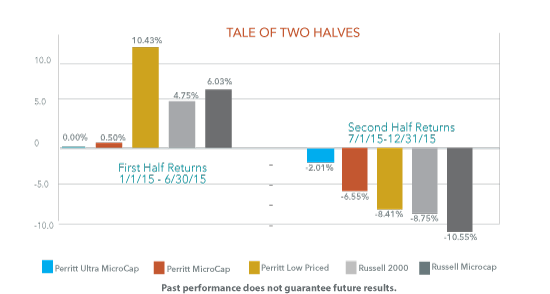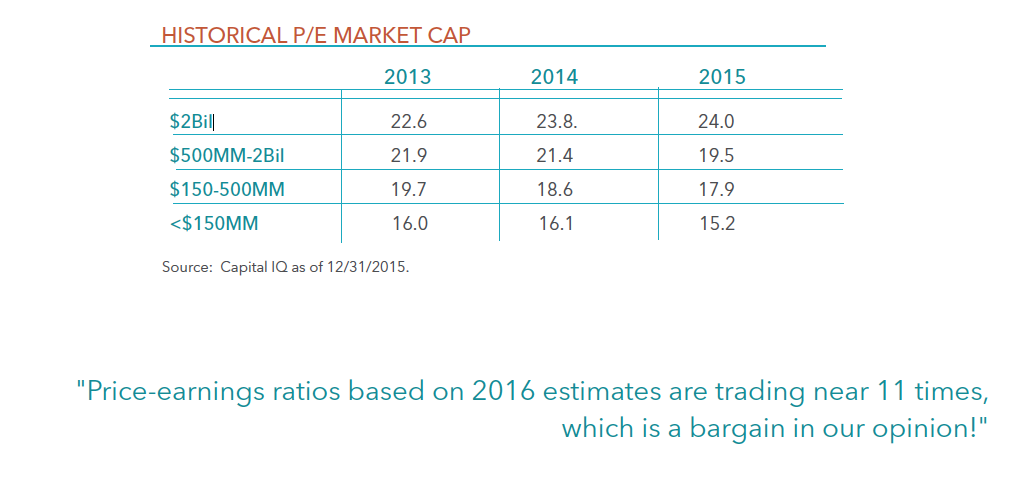Marvelous Microcaps
Quest Resources: One person’s garbage is another’s treasure!
INTRO:
 At Perritt Capital Management, we take focused positions in companies where we have a high conviction in their success; companies that are out of the mainstream of small cap investing. To highlight our process, we are pleased to present the fourth installment in our new series “Marvelous Microcaps – Big Ideas on Small Companies”. This series profiles companies that we believe have a niche in their existing markets or are launching a product that could disrupt their marketplace.
At Perritt Capital Management, we take focused positions in companies where we have a high conviction in their success; companies that are out of the mainstream of small cap investing. To highlight our process, we are pleased to present the fourth installment in our new series “Marvelous Microcaps – Big Ideas on Small Companies”. This series profiles companies that we believe have a niche in their existing markets or are launching a product that could disrupt their marketplace.
THE COMPANY:
Quest Resources (QRHC) is a provider of waste management services to businesses in the Fortune 1000 space. Operating as an “asset-light” provider of services, Quest is an outsourced managed services provider for their customers. Utilizing a proprietary technology platform, they analyze the needs of their customers and find the best local providers of waste management services to address customer’s needs. The majority of their business is driven by the recycling and disposal of regulated waste streams: such as food, construction, and automotive waste, hazard chemicals and general recycling. While a private residence may rely on municipal waste services to collect their trash from the curb once a week, most municipal sanitation providers do not service private businesses nor regulated waste streams necessitating the use of commercial providers of these services. By targeting the Fortune 1000 market, Quest Resources are servicing clients with complex requirements. In fact, their average customer has five different waste streams spread out across multiple locations which requires the use of multiple service providers. Quest’s business proposition is that they take over the waste management needs of a portion or all of a company’s locations, aggregating the services under the Quest umbrella. From that point, they will find the best service provider for each waste stream in the local area and outsource the physical disposal to that provider. The value add to their customers is that they do not need to find these providers themselves and they do not have to handle multiple invoices for waste removal. In the case of regulated waste streams, Quest helps to provide an audit trail for businesses to use in the event regulators need to see records for compliance purposes. While Quest mainly utilizes third-party service providers, they will operate their own waste management services in certain verticals in geographies where they have significant customer concentration.
WHY WE OWN: THE PERRITT ADVANTAGE
Today Quest is a top holding for the Ultra MicroCap Fund and has been recently graduated to the MicroCap Opportunities fund, however, the origin of our research in the name goes back to 2014. At that time, the company had grown revenues significantly from $67 million in 2013 to $174 million in 2014. However, the previous management team achieved this growth by underpricing their services and losing money on new contracts. These poor operating results led to a steep sell off in the company’s stock which necessitated the hiring of a new management team led by current CEO Ray Hatch. Under Ray’s leadership, the company extricated themselves from the money losing contracts signed by the previous management and began the process of building out their technology platform and reorganizing their sales force. Perritt initiated a position when the initial results from their internal initiatives began to show improvements in the company’s prospects. Today, these efforts have paid off, with gross margins* more than doubling in the past five years from 7.8% at the end of 2016 to 18.7% on a trailing twelve-month basis as of the most recent quarter. The improved margins along with prudent management of other corporate expenses have allowed Quest to go from a money losing business to a profitable business that is ready for the next phase of expansion.
With the turn-around behind them, the firm has begun to focus on future growth. They recently completed a series of acquisitions in 2021 that saw them purchase four waste management companies throughout the continental U.S. These acquisitions bring some of the services that Quest has been providing their customers in house which will allow them to capture additional margin growth as they capture more of their customer’s dollar spend. With the company now profitable, they have the ability to consistently generate cash to pay for further growth through acquisitions while continuing to grow organically by leveraging their internal sales force and technology platform.
We consider Quest Resources to be a high conviction name. The name is a top ten holding for the Perritt Ultra MicroCap Fund and was added to the Perritt MicroCap Opportunities fund last year as results improved. We are optimistic that they have the right technology, service offerings and most importantly, leadership to drive their success going forward.
*Gross Margins represent the percentage of revenue that remains after accounting for the direct costs of selling a product or service.
Perritt. Marvelous Microcaps – Big Ideas on Small Companies.
iCAD, Inc.: Breast cancer detection solutions built on artificial intelligence
INTRO:

At Perritt Capital Management, we take focused positions in companies where we have high conviction of their success; companies that are out of the mainstream of small cap investing. To highlight our process, we are pleased to present the fourth installment in our new series “Marvelous Microcaps – Big Ideas on Small Companies”. This series profiles companies that we believe have a niche in their existing markets or are launching a product that could disrupt their marketplace.
THE COMPANY:
iCAD (ICAD) operates through two segments, Cancer Detection and Cancer Therapy. Their advanced breast cancer detection solutions are built on artificial intelligence that enable radiologists to find cancer earlier and faster. Their Breast Health Solutions suite operates in 2D and 3D and rapidly and accurately analyzes each image detecting both malignant soft tissue densities and calcifications with unrivaled accuracy. The company’s ProFound AI Risk product works with 3D mammography and is the first and only clinical decision support tool to estimate breast cancer risk for each woman. This will move the breast mammography industry from age-based screening to risk-based screening leading to both prevention and treatment of breast cancer.
With their innovative technology, they expanded the breast cancer detection to also detect and treat other cancers. Xoft Brain IORT recently treated the first patient with glioblastoma (brain cancer). Xoft is FDA-cleared and licensed for the treatment of cancer anywhere in the body. It used the world’s smallest X-ray source to deliver a precise, concentrated dose of radiation directly to the tumor site thus targeting only the cancer cells and not damaging nearby healthy cells. IORT and Xoft allow oncologists and surgeons to deliver a full course of radiation treatment in one day, at the time of surgery, while the patient is already under anesthesia. Other cancers that can be treated are non-melanoma skin cancer, Endometrial, and cervical cancer.
WHY WE OWN: THE PERRITT ADVANTAGE
The marketplace in breast imaging for this product is huge and largely untapped. Approximately 20% of breast cancers are not detected and traditional mammograms generate many false positives. ICAD’s product operates more efficiently, accurately, and faster. The current install base is about 1350 units marketed by a sales force of only 13. The Therapy segment’s potential is huge to treat many types of cancer in the operating room removing the need for many sessions of radiation. The platform also provides for a razor-razorblade model resulting in recurring revenues.
Third quarter of 2021 had 31% revenue growth which missed analysts’ estimates by $500,000. The stock has fallen more than 30% providing a great buying opportunity. They have cash of $35.8 million which should be sufficient to fund their future growth. A new CEO was appointed in December and Insiders have bought stock recently.
ICAD traded at a little more than 3 times 2022 sales estimates which reflects 30% growth with 72% gross margins. They have been affected by Covid-related slowdowns in procedures, which we believe will increase as the effects of the COVID pandemic diminish. They have been aggressively pursuing subscription offerings which will likely increase recurring revenues. This is a stock that has disruptive technology and is currently selling at bargain bin prices.
Perritt. Marvelous Microcaps – Big Ideas on Small Companies.
Michael Corbett visits Fortitude Gold (FTCO) mine

Portfolio Manager and CIO Michael Corbett visits Fortitude Gold (FTCO) mine, November 2021
Fund holdings and sector allocations are subject to change at any time and should
not be considered a recommendation to buy or sell any security. For the top ten
holdings for the Perritt MicroCap Opportunities Fund please click PRCGX and
PREOX for the Perritt Ultra MicroCap Fund.
Identiv: A specialty security company venturing out into new horizons
INTRO:

At Perritt Capital Management, we take focused positions in companies where we have a high conviction in their success; companies that are out of the mainstream of small cap investing. To highlight our process, we are pleased to present the second installment in our new series “Marvelous Microcaps – Big Ideas on Small Companies”. This series profiles companies that we believe have a niche in their existing markets or are launching a product that could disrupt their marketplace.
THE COMPANY:
Identiv, Inc. (INVE) is a technology company operating in the security space specifically addressing needs around physical and logical access to secure sites and identity verification for access and cyber security purposes. In addition to that they provide asset tracking, archiving, and monitoring products. The company sells both hardware and software on a contract and subscription basis. They market their products through a diversified network of distributors, security system integrators and value add resellers. In addition to their core security markets, the company has leveraged their expertise in radio-frequency identification (RFID) technology to expand use into several other markets where asset tracking and verification needs were not being sufficiently met, opening several new market opportunities for their products in an increasingly networked world.
Identiv, Inc. offers a wide variety of products including hardware for controlling access to secure facilities such as government facilities, corporate facilities, schools, and apartment buildings. These range from the ubiquitous number pads found on many secure entry points to state-of-the-art passive, touchless RFID readers that allow for frictionless entry for authorized individuals while preventing access to those without authorization. The company offers products in the video surveillance space that include features such as facial recognition, vehicle recognition and object identification/tracking. This data is then stored for future use as indexed records for their customers and as real time data around occupancy and utilization. The core competencies of the company in the security space have given the company substantial expertise in the development and use of RFID technology. The key long term growth driver for the company is leveraging their expertise to expand its use in the security space as well as its deployment in other industries.
WHY WE OWN: THE PERRITT ADVANTAGE
We own Identiv in both mutual funds and the investment thesis is based on the growth prospects of the company, their patent portfolio, and the strength of the company’s financials. The company has leveraged their expertise in security focused RFID technology to bring the technology to other verticals. As an example, CVS Pharmacies uses Identiv’s RFID technology in their labels to enable a program called Spoken Rx™ , designed for consumers with visual impairment to scan any prescription label with their phones to receive an audio readout of their prescription. They recently announced the rollout of this program in all CVS locations nation-wide. In other use cases their labels have been used on prefilled syringes in healthcare settings to track the time, place and medication used in injections and been used to track blood samples in laboratory settings. Outside of healthcare, Nike has installed Identiv’s tags inside of some of their shoes. These tags can provide consumers with additional features and serve as verifications of authenticity which can be popular with collectors. The company also has sold their technology and services into the cannabis space with a recent contract award from a customer for an initial order of 20 million units. To date the company estimates their devices have been installed on 1.5 billion physical objects worldwide with the market potential for networked devices being in the hundreds of billions.
The company has a substantial portfolio of 36 different patent families as well as additional trade secrets. Their ability to design products around their customer’s needs has led to over 150 antenna designs and in-house RFID designs. We believe that this background gives them an advantage over competitors that do not offer the same high-touch level of service and expertise and serves as a defensive moat around the company’s business model. The company recently paid off all their outstanding loans and is now debt free with $29.2 million in cash available to fund their internal growth needs as well as potential acquisitions.
We consider Identiv to be a high conviction name. At the close of the most recent fiscal year ending October 31, 2021, the Ultra MicroCap Fund had a weighting of 1.74% of assets and the MicroCap Opportunities Fund had a weighting of 0.87% versus only 0.05% in the Russell Microcap Index. We believe the company is in the early innings of a multi-year market expansion driven by the growth of RFID use around the world and based on fundamental analysis, Identiv could be a successful, long-term player in the space.
Perritt. Marvelous Microcaps – Big Ideas on Small Companies.
Co/Investor Club Microcap Managers List
Matt Brackmann,
Perritt Capital Management
The next feature of our Top 50 Micro-cap Manager list is Matt Brackmann. “Matt joined Perritt Capital Management in 2004. As portfolio manager for the Perritt Ultra MicroCap Fund, Matt is actively involved in idea generation and company research. Matt also serves as an equity analyst for the Perritt MicroCap Opportunities Fund. As Director of Trading, Matt is responsible for overseeing the firm’s trading desk, which includes overseeing all trading activity for advisor clients, keeping and maintaining trading records, arranging and managing relationships with sell-side brokerage firms, and serving as the liaison between the advisor and the advisor’s client custodians. Additionally, he is a Registered Investment Advisor and received his B.B.A. in Finance from the University of Iowa in 2004.”
The microcap fund under management typically holds anywhere from 70-80 securities with the largest weighting reserved for the tech sector. Now you might imagine the difficulty of trying to validate 15 or more investment theses continuously, yet Matt manages to break each thesis down in a strikingly simple manner. For example, Turtle Beach (HEAR) was trading near $5 early in the pandemic. The company had not met analyst expectations for some time, so the stock price had been sliding prior to Covid-19’s outbreak. The fund Matt manages purchased some shares and has enjoyed a nice ride up to $28. Or as Matt humbly put it, “it didn’t take a big leap to understand that people would stay home and spend [more] money on gaming” throughout Covid-19. While Matt has drawn inspiration from many people including Marcus Aurelius, who wrote “Meditations,” his greatest inspiration came from his mom. While growing up on a farm, nearby his mother worked at JP Morgan Chase which ultimately had a major influence over the direction of Matt’s career.
We are excited to introduce Matt as the latest addition to our Top 50 Managers list and include him as a part of our network.
Click here to view PDF.
2021 Distribution Update
The Perritt MicroCap Opportunities Fund and the Perritt Ultra MicroCap Fund paid a long-term capital gains distribution on 11/23/21 to shareholders.
- The long-term capital gains distribution in the Perritt MicroCap Opportunities Fund (PRCGX) was $4.12564 per share and $1.36876 per share in the Perritt Ultra MicroCap Fund (PREOX).
- Any income or short-term gains in our Funds will be paid on 12/28/21 to shareholders of record on 12/27/21.
Long-Term Capital Gains distribution:
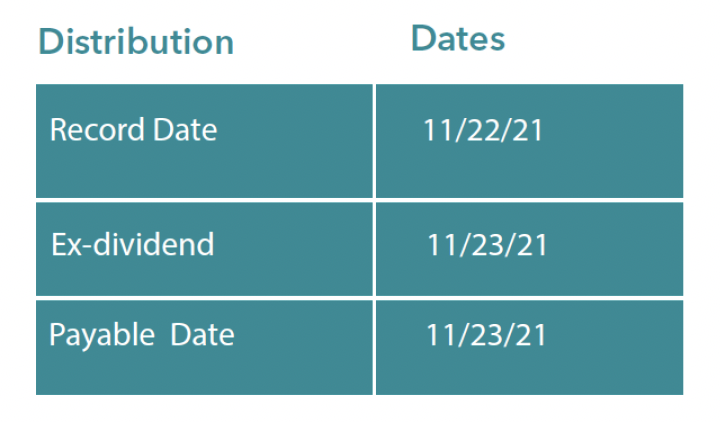
Please visit our website at www.perrittcap.com/index.php or call 1-800-331-8936 for more information. Thank you for your investment and trust in the Perritt Team.
Click here for research and insights regarding small company investing.
Click here for a prospectus.
ImmuCell – An “Udderly” exciting name in the animal health space
INTRO:

At Perritt Capital Management, we take focused positions in companies where we have a high conviction in their success; companies that are out of the mainstream of small cap investing. To highlight our process, we are pleased to present our new series “Marvelous Microcaps – Big Ideas on Small Companies”. This series will profile companies that we believe have a niche in their existing markets or are launching a product that could disrupt their marketplace.
THE COMPANY:
ImmuCell Corp. (ICCC)1 is an animal health company headquartered in Portland, Maine. ImmuCell develops and manufactures products addressing common infections that occur in dairy and beef herds. They market these products through an internal sales team spread throughout the United States and Canada, and internationally through distribution partners.
ImmuCell has one primary product line in the marketplace today called First Defense®. First Defense® is the only USDA-approved orally administered scours preventative with claims against three major infections that impact dairy cows. Scours is a leading cause of infections in dairy calves and costs the industry approximately $740 million dollars a year. First Defense® has the advantage of reducing waste by being administered to only viable calves and reducing unnecessary vaccinations being given to the mother. The company is also pursuing regulatory approval for a new product called Re-Tain™ to address an underserved market in sub-clinical mastitis infections that can’t be addressed by existing anti-biotics. Mastitis is an infection of a cow’s mammary glands that at clinical levels prohibits the cow from producing commercially viable milk. In any given year it can impact 20-25% of a dairy herd. ImmuCell’s Re-Tain™ is intended to address infections at the pre-clinical level, meaning prior to the infection being so severe that the animal is removed from the milking herd. They accomplish this by using an active ingredient that does not require the cow be removed from the milking herd during treatment because unlike the current standard of care, the active ingredient is not an anti-biotic also used in humans.
This is the first of our ongoing “Marvelous Microcaps – Big Ideas on Small Companies” series.
WHY WE OWN: THE PERRITT ADVANTAGE
We view the competitive advantage for ICCC to come from three different characteristics: They have a set of product lines differentiated from the competition in terms of the pathologies they address and the active ingredients used, they have products that are more targeted in their treatment methodologies which reduces waste and ultimately provides great economic benefit to their customers, and they have invested in a new product line that could change the market for mastitis treatment in that it addresses the problem before the animal is clinically infected and has to be pulled from the milking herd and be treated with anti-biotics. Currently, mastitis costs the dairy industry $2 billion per year and Re-Tain™ could help lower those losses to farmers, thus making it a disruptive entry into its marketplace. The company expects a decision on regulatory approval to take place in the second half of 2022. The company has made significant investments in both their manufacturing capabilities as well as their sales and marketing efforts in the last several years and that growth is showing in their numbers. In the most recent quarter ending September 30, 2021, they reported revenue growth of 38% of a year-over-year basis. Based on our own research including years of dialogue with management, we believe that they have the opportunity to disrupt the standard of care in their end market with the launch of Re-Tain™.
We consider this a high conviction name, and it is a top ten holding as a percent of fund assets in the Ultra MicroCap Fund, currently standing at 2.0% as of October 31, 2021 versus making up just .01% of the Russell Microcap Index. ImmuCell currently does not have any analyst coverage from a major research firm, and we believe that may be due to the esoteric nature of their markets that it has so far escaped the attention of much of the investing public. With the additional expected product line and the increased resources allocated to marketing their products, we believe that ImmuCell is a unique, potentially disruptive, and undervalued investment in the animal health and wellness space.
ImmuCell gives shareholders in our MicroCap Funds exposure to Perritt’s active, fundamental bottom-up process and portfolio management versus a passive investment in a Microcap Index.
Perritt. Marvelous Microcaps – Big Ideas on Small Companies.
2020 Distribution Update
We do not anticipate a capital gain or income distribution this year for the Perritt MicroCap Opportunities Fund or the Perritt Ultra MicroCap Fund.
Please visit our website at www.perrittcap.com/index.php or call 1-800-331-8936 for more information. Thank you for your investment and trust in the Perritt Team.
Click here for research and insights regarding small company investing.
Click here for a prospectus.
Manager Commentary, 2nd Quarter 2020
Wall Street and Main Street Get a Divorce
Wall Street and Main Street have gotten a divorce, or at the very least they have separated. The U.S. is in a recession but the stock market marches blindly higher. In most people’s lives we have never seen such a confluence of dangers: Depression levels of unemployment, the economy in a downward spiral, prevalent rioting and unrest, and an imminent second wave of the virus. Yet the stock market continued upward and celebrates information, such as jobs data that is slightly misleading. The S&P 500 has had the biggest rally in its history. It plummeted 34% from its mid-February high to bottom on March 23. It has since rocketed up 43%.
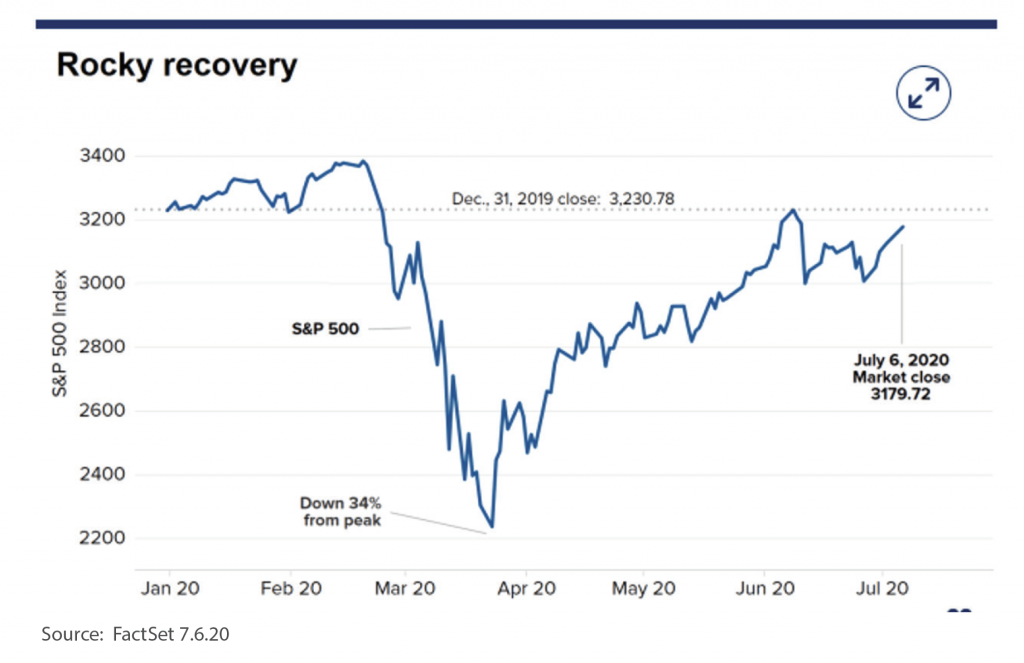
We have long been told that the market is forward thinking, and the economy looks backward. But these are unprecedented times. Economic data has surprised to the upside but has already lagged again making the data stale almost immediately. Uncertainties, which the market hates, are in abundance. Will states shut down again (as some are already doing)? When will a vaccine be available? How many businesses will permanently close? Will generous unemployment benefits and another stimulus be extended? And the big looming question, who will win the Presidential election in November? Many small businesses, which have been hit the hardest, are not publicly traded so they are not reflected in the market. We seem to be a market of wishful thinkers, but if just one of the cogs in the wheel fails to work, what are the implications? Has the market taken that all into account?
An explanation for a continued bullish market is that the worst is behind us and the economy will rebound quickly. FOMO (fear of missing out) is at play here. Who wants to miss out on performance like we have seen the last 10 years? We also locked a population down with nothing to do, no sports to watch, no casinos to go to, and then put a stimulus check in their pockets. Robinhood, which caters to amateur traders, reported a record 3 million new accounts in the first quarter.
Robinhood Data Shows a Leap in Retail Investor Trading Activity
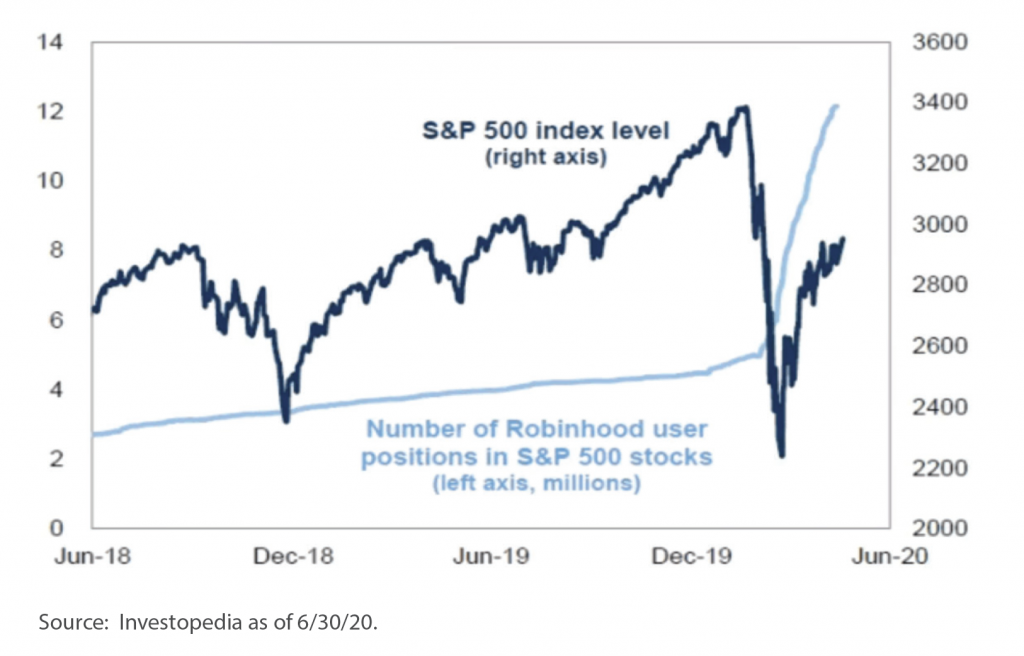
Another explanation is TINA – There Is No Alternative. Low interest rates have made bonds and money market accounts unappealing, so excess cash has been plowed into the stock market.
Going forward, we are skeptical. The market hates uncertainty and we have an abundance of it. A market dealing with uncertainties is nothing new but an overvalued market dealing with foreboding economic data among so many other factors is new. Will Wall Street and Main Street reunite?
Given what we are all living with today, here is a great perspective
It is a mess out there now. Hard to discern between what’s a real threat and what is just simple panic and hysteria. For a small amount of perspective at this moment, imagine you were born in 1900.
On your 14th birthday, World War I starts, and ends on your 18th birthday. 22 million people perish in that war. Later in the year, a Spanish Flu epidemic hits the planet and runs until your 20th birthday. 50 million people die from it in those two years. Yes, 50 million.
On your 29th birthday, the Great Depression begins. Unemployment hits 25%, the World GDP drops 27%. That runs until you are 33. The country nearly collapses along with the world economy.
When you turn 39, World War II starts. You are not even over the hill yet. And don’t try to catch your breath. On your 41st birthday, the United States is fully pulled into WWII. Between your 39th and 45th birthday, 75 million people perish in the war.
Smallpox was epidemic until you were in your 40’s, as it killed 300 million people during your lifetime.
At 50, the Korean War starts. 5 million perish. From your birth, until you are 55 you dealt with the fear of Polio epidemics each summer. You experience friends and family contracting polio and being paralyzed and/or die.
At 55, the Vietnam War begins and does not end for 20 years. 4 million people perish in that conflict. During the Cold War, you lived each day with the fear of nuclear annihilation. On your 62nd birthday you have the Cuban Missile Crisis, a tipping point in the Cold War. Life on our planet, as we know it, almost ended. When you turn 75, the Vietnam War finally ends.
Think of everyone on the planet born in 1900. How did they endure all of that? When you were a kid in 1985 and did not think your 85-year-old grandparent understood how hard school was. And how mean that kid in your class was. Yet they survived through everything listed above.
Perspective is an amazing art. Refined and enlightening as time goes on. Let us try and keep things in perspective. Your parents and/or grandparents were called to endure all of the above – you are called to stay home and sit on your couch
Maybe we don’t have it that bad?
This too shall pass.
Perspective is meaningful.
Manager Commentary, 1st Quarter 2020
A GLIMMER AMONGT THE DOOM AND GLOOM
To say these are unprecedented times would be an understatement. Fear and despair are at the forefront of all our news. Rather than recap all the COVID-19 news, we thought we would take the high road and remain optimistic. We believe the best time to find investments is when everyone else is turning away. To quote one of our favorite leaders, Winston Churchill, “Never give in – never, never, never, never in nothing great or small, large or petty, never give in except to convictions of honor and good sense. Never yield to force; never yield to apparently overwhelming might of the enemy.”
Part of our optimism is due to the belief that active management appears to be coming back in favor. We believe active management will beat index-tracking funds as the global meltdown has led to a dislocation between price and value. We are seeing it with the large cap stocks, where 60% of actively managed mutual funds that buy large cap stocks beat the Russell 1000 in February. They outperformed across core, value and growth investing styles. New actively managed ETFs debuted at the end of March, allowing managers to pursue their strategies without fear of being copied.
Active managers have historically outperformed their stated indices during selloffs and other periods of volatility when they identified outperformers and mitigated the downside. Passive investments have almost total exposure to the performance of a benchmark index – both when it is rising and when it is falling. The following two charts show the outperformance of active investing versus passive investing in both the Dot.Com Crash and the Global Financial Crisis.
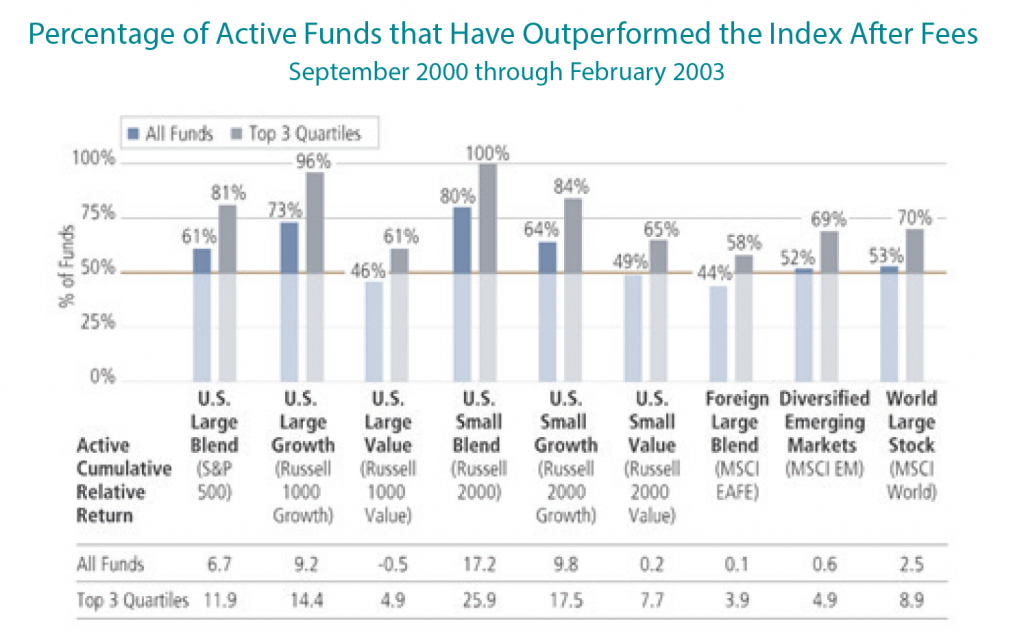

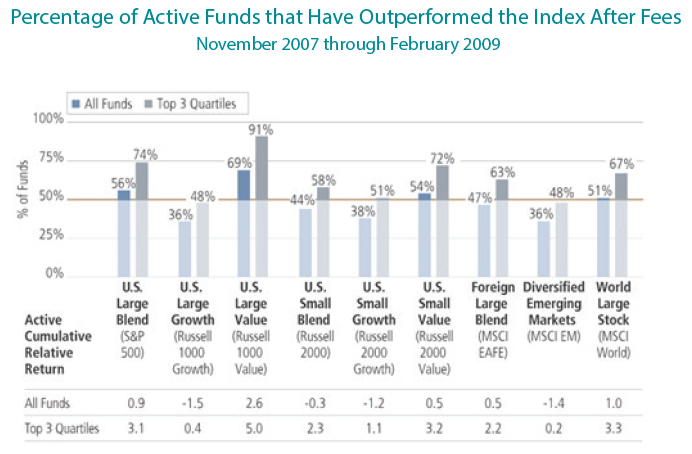

We believe stock-picking is making a comeback. There is no substitute for evaluating a company and how it performs in extenuating circumstances. After the world calms down, there will be a new normal, and choosing the right stocks for that environment should be invaluable.
The past quarter was painful for both active and passive investors. The equity markets, particularly small stocks, had the worst quarter since the 2008 bear market and the great depression that started in 1929. As was said earlier, these are unprecedented times, mainly because the economy is shut down for the most part. While it is imperative for most us to stay home to save lives, the economic ramifications are enormous. To help the economy and most workers, the Federal Reserve and the Federal government launched the largest stimulus in our history, which we agree is justified. However, the long-term economic consequences will be very costly. As of quarter end, the Federal Reserve has not only reduced interest rates to zero but added more than $6 trillion of liquidity to the economy. The Federal government is in the process of adding more than $2 trillion to the economy and will likely add more soon. These two packages represent more than a third of the U.S. economy’s annual GDP (Gross Domestic Product). As our leaders and the POTUS (the President) prepare to evaluate and present a plan to return to work and life as we once knew, the future will likely be very different for both individuals and businesses. Because of those differences in the future, we have a different sense of optimism for active management and small stocks. We expect many differences in the years ahead. Here are a few that we think will benefit small stocks.
As investors in small companies, we have always been aware of the challenges of raising capital. Capital has been available for small companies, but we would argue the cost has been egregious for most in the past decade or so. A decent part of the capital the Federal Reserve and the Federal government are putting into the economy are low cost loans. A large part of these loans will be just enough for some companies to survive. However, there may be several small companies where these loans may help them thrive in the future. Another change we see is less stock buyback programs. It seems clear to us that future stock buyback programs may be frowned upon. While buybacks can be a useful tool for capital, it is hard to argue that they do not help economic growth or job growth. If the economy and stock market were so strong in the past ten years, why did our economy not grow much above 2% annually? We are in the camp that the past tax cuts mostly benefitted larger companies and those cuts were largely used for stock buybacks. The bottom line is that we believe capital will be used to grow the economy and create jobs, and less for stock buybacks.
There are other benefits for smaller companies, but we believe the biggest change will be in the change of attitude. Small companies employ the majority of our workforce. The number of people applying for and collecting unemployment is skyrocketing every week. Most unemployed worked for small companies. We expect, as a nation, we will encourage our leaders to help smaller companies and their workers. We expect future policies that will benefit smaller companies and not just large companies as we saw in the past. In the meantime, there will likely be more challenges for investors. Below are some updates on our micro-cap portfolios that make us believe these companies will survive and likely thrive in the future.
In the past few weeks, we have had discussions with management from all our portfolio companies. A small group of them have issued updates on their businesses and, for the most part, withdrew any guidance for 2020 results. It is likely that the rest of our companies and most public companies will withdraw 2020 guidance soon. It will be interesting to see how the markets react to these announcements, but we remain optimistic that investors will focus the potential results of 2021 and beyond. Our recent conversations with management were about not only long-term prospects, but the near-term challenges as well, particularly whether they can withstand an extended shutdown of the economy. We are happy to report that most are very confident that they will survive and thrive. While there were about a half dozen that still concerned us, those management teams assured us they will have the resources to survive.
Below is a table that gives us confidence these companies will survive this shutdown and can thrive in the future. As you can see, on average, companies in our portfolios are less leveraged than companies in the Russell Microcap, Russell 2000 and the S&P 500 Indexes. We also have more companies with no debt on the balance sheet than these indexes. Between our two microcap strategies, we have a dozen that trade at or near net nets. This means that the company’s market capitalization is less than the company’s current assets less all liabilities. A great deal of these current assets are cash. Lastly, nearly a quarter of our companies paid quarterly cash dividends and all but two have dividend yields above the 10-year government yield. Thank you for reading our commentary. We hope you and your family are safe and healthy. While the last quarter and even the past few years has been challenging for micro-cap investors, we continue to have a glimmer of hope for micro-cap companies.

Manager Commentary, 4th Quarter 2019
PARTY LIKE IT’S 1999
The longest bull market in history keeps rolling along. And the recipients of this bull market’s run are losing money hand over fist. There are more than 40% of listed companies in the U.S. that lose money – the highest level since the late 1990’s outside of post-recession periods. 42% of those money losing companies are health care and 17% are technology companies. Approximately less than a quarter of the companies that went public in 2019 will have positive net income – the lowest level since the tech bubble. Like the tech bubble in 1999, investors are pouring money into tech and now health care. Last year investors put $11 billion into digital health companies. Venture capital funding has reached the dot-com era level. According to research firm Preqin, private equity firms have amassed approximately $1.5 trillion in unspent capital, the highest total on record.
This isn’t the only characteristic that is like the tech bubble. The Fed’s open checkbook is making many observers worried. There is extraordinary liquidity being provided by the world’s central banks, which is flowing to the most liquid and largest names in the S&P 500. This reminds us of 1999, when the Fed expanded the balance sheet at the end of the year and early in 2000 as a precaution against a Y2K disruption. The Fed supplied about $120 billion to the market through repos to prevent a disruption then. This was about the same amount pumped in during the financial crisis of 2008 and more than it provided in reaction to the September 11 attacks. Since October of last year, the Fed has supplied approximately $400 billion in four months – a $1.2 trillion annual rate!!
This liquidity is feeding into large, liquid names – the bigger the better. As seen by the Fear & Greed Index below, the greed reading is at 89 down from 93 a week ago. We believe this is FOMO (Fear Of Missing Out) at its best.
FEAR AND GREED INDEX
What emotion is driving the market now?
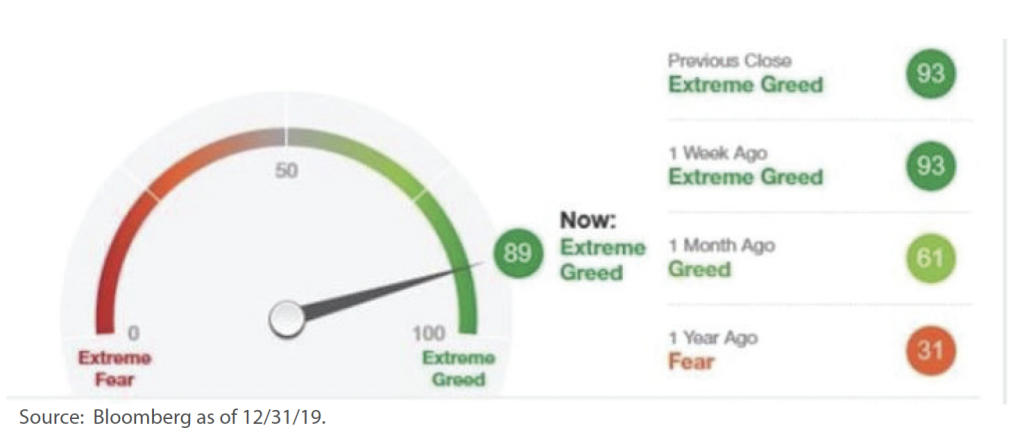
Here is another data point to think about. There are currently 82% of companies in the S&P 500 Index trading above their 200-day average price, the highest percent in 2 years. A senior trader and market technician at Instinet said the last time so many companies were above this level, a correction followed not long after. According to Chuck Royce, over the last 20 years the 50 biggest stocks in the Russell 3000 Index have averaged a combined total market cap of about four times the total market cap of the Russell 2000. At the end of 2019, that ratio was more than six times – higher than it was at the height of the internet bubble in 2000.
Are we beginning to sound like a broken record? This may not be the makings of a bubble, but it’s the closest thing we have seen to one in a long time. If this is another bubble, the market overall could be in for a rough ride soon. While microcap stocks may get hurt if this bubble pops, we would argue that the damage would be significantly less and the rewards following the carnage could be material. As we have shown in past commentaries, microcap stocks are selling near their largest discount to large-cap stocks in decades. While past performance is no guarantee of future results, this market reminds us a great deal of 1999. The performance table below shows how our MicroCap Opportunities Fund, Russell 2000 Index and S&P 500 performed in the pre and post bubble market of 1999. The results are very striking. Unfortunately, the Russell Microcap Index was not created until 2005, so hence, the reason that Index is not included. The bottom line to us is that small-cap cycles can be very powerful when they occur, and we hope to soon be partying like it’s 1999 again. We provided several other charts from our friends at Furey Research, which give us more confidence in the next positive small-cap cycle.

Click here for standardized performance.
Performance data quoted represents past performance and is no guarantee of future results. Investment return and principal value will fluctuate so that an investor’s shares, when redeemed, may be worth more or less than the original cost. Current performance may be lower or higher than the performance data quoted. Performance data to the most recent month end may be obtained by calling (800) 331-8936. The fund imposes a 2% redemption fee on shares held for less than 90 days. Performance data does not reflect the redemption fee. If reflected, total returns would be reduced. The inception date for the Russell Microcap Index was 6/01/2005, therefore no average annual return figures for the 20-year period are available.
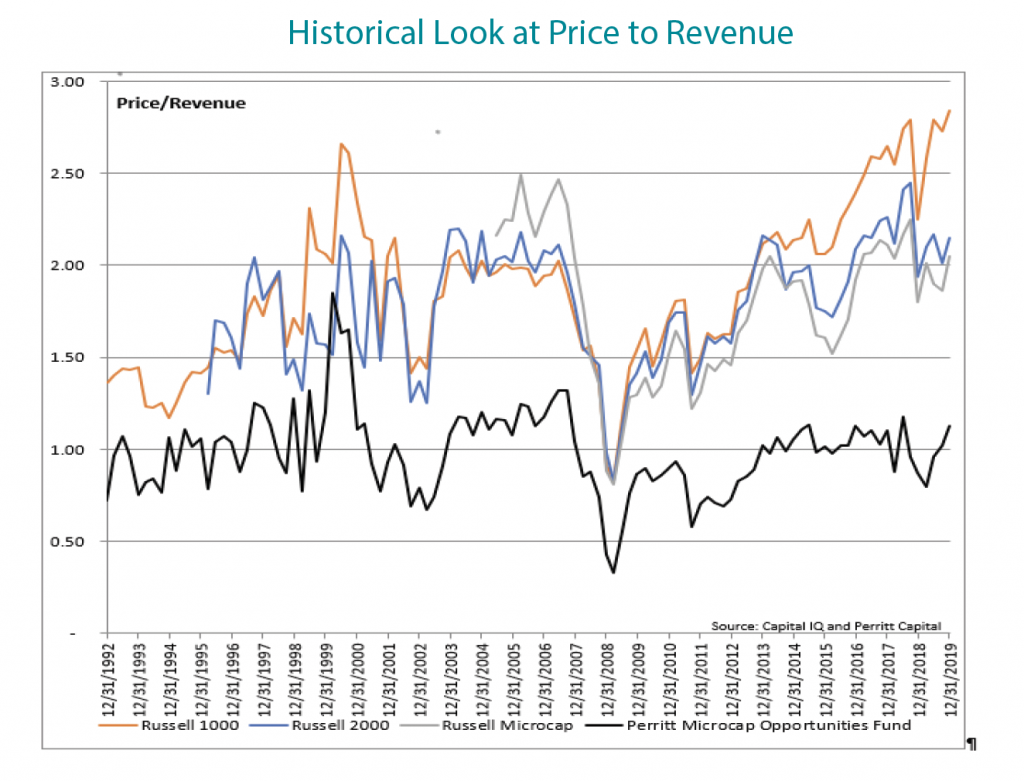
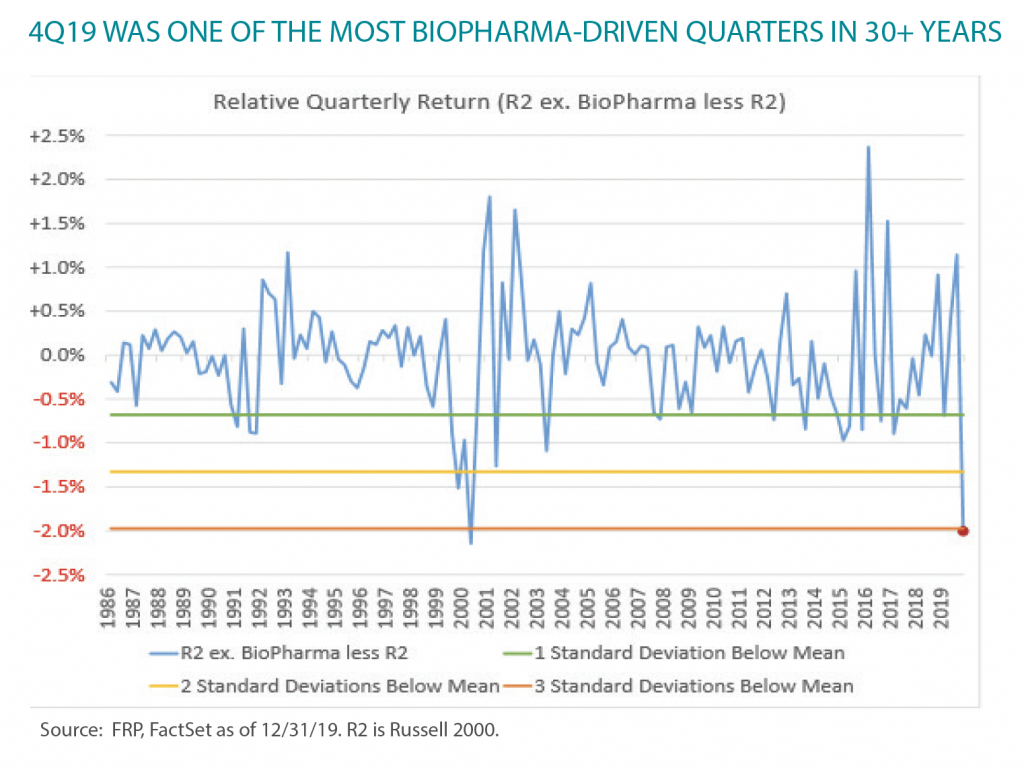
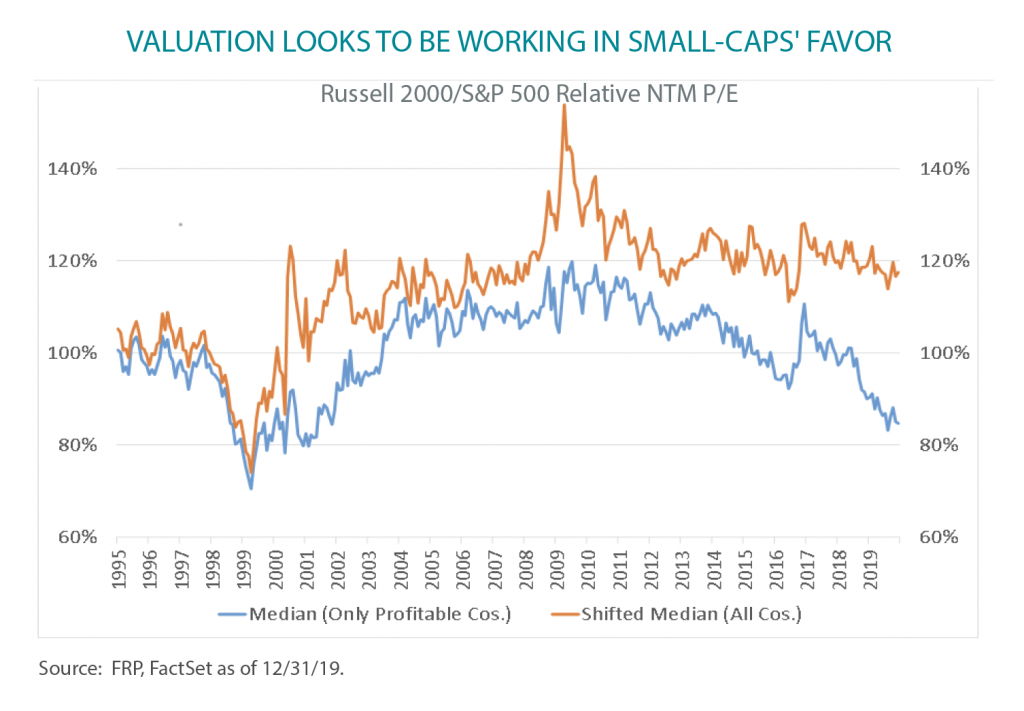
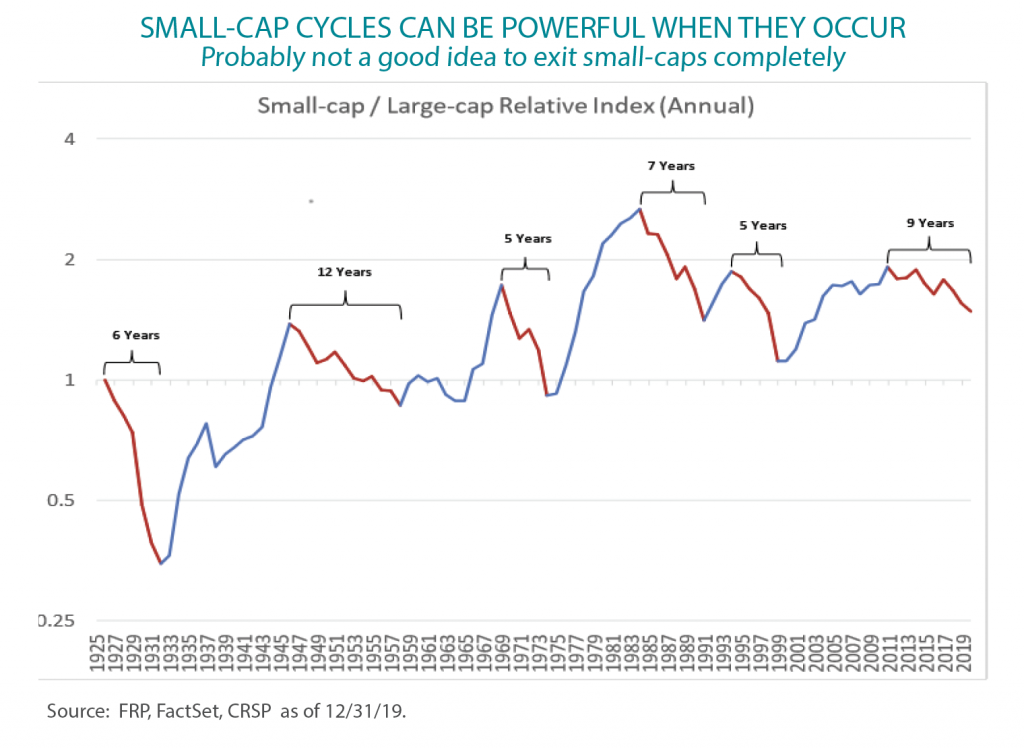
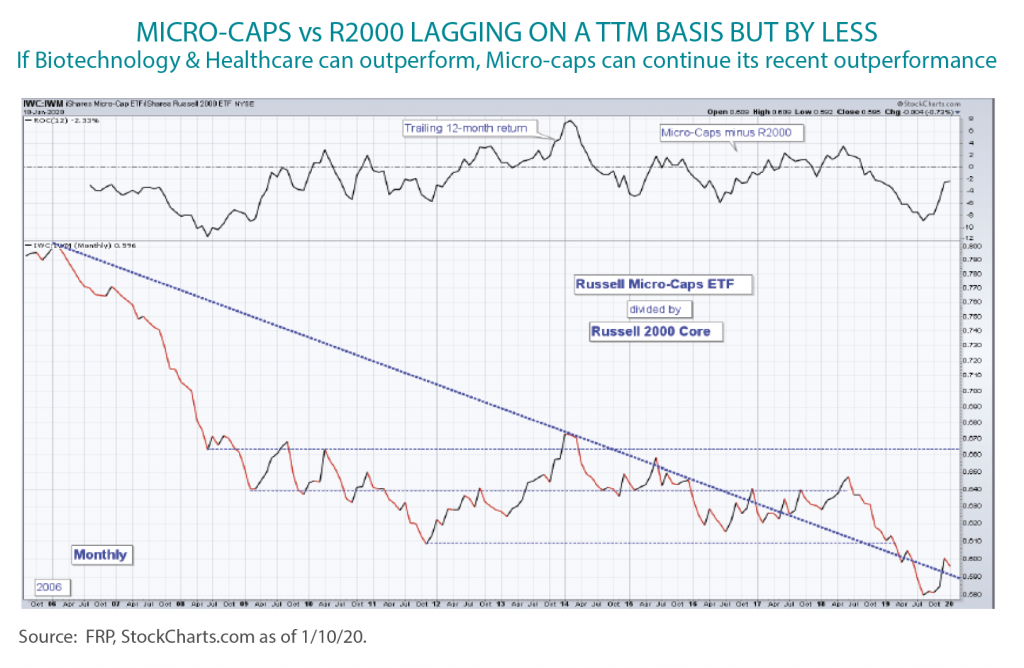
Manager Commentary, 2nd Quarter 2019
Whac-a-Mole
Lately it feels like the market has been playing a game of Whac-a-Mole. The moles (market worries) pop up from their holes at random and the market moves down accordingly until the mole goes back into its hole, or the worries have been placated. There are many types of “moles”: recession, longevity of this bull market, interest rates, Trump, Iran, tariffs, and rising levels of debt to name a few. We can see some mole events in the following chart as indicated by the red spikes and the market reaction to them.
The biggest threat may be the Fed and interest rates. In May, Powell said it was unlikely the Fed would cut rates. As soon as a month later, he indicated that the case for a rate cut was strengthening. The market and the Fed seem to be at odds though. Futures trading points to four cuts in the next year. We could see a big drop in the market if the Fed doesn’t acquiesce. The case for cutting rates does seem stronger though: global economic data is mixed, tax-cut stimulus is finished, and the trade war is taking a toll.
This has all resulted in many nervous investors. They have turned to bonds and other vehicles, such as low volatility ETFs and Quality ETFs to minimize a downfall in the market. Individual investors are on track to buy a majority of the U.S. government’s newly issued longer term debt. This is a first since the Treasury Department began publishing data from its auctions. The 10-year Treasury note has fallen to multi-year lows. An investor recently stated, “What they’re yielding right now doesn’t matter – I’m looking for downside protection.” Are we headed the way of Europe and Japan? Negative interest rates in Europe and Japan have left investors effectively paying governments to hold their money when they purchase 10-year government securities. Funds that focus on low volatility have also become popular taking in nearly $12 billion year to date, more than double that of any other factor this year and the most for a six-month period since 2016.

While the overall stock market continues to play this game of Whac-a-Mole, we have noticed a new trend emerge in the past few months within the micro-cap space. We have seen a waive of merger and acquisitions as well as significantly positive news items from micro-cap companies. Not only did five of our companies get buyout offers, ten companies made accretive acquisitions themselves. Below are just a few of the positive news we saw from our portfolio companies in the past three months.
IN THE NEWS…
- Medicine Man Technologies (MDCL) announced that the company signed a letter of intent to acquire two cannabis cultivation facilities. This is part of the company’s expansion plans within the legal cannabis space and is being financed with a portion of the proceeds from the announced strategic investment of up to $14 million from Dye Partners.
- New Age Beverage Corp. (NBEV) announced the launch of a portfolio of products in the CBD space with plans to roll out their line in 60 different countries throughout 2019. The company is launching through five channels made up of direct-to-consumer, direct-store-door, traditional retail, e-commerce and medical channels. Additionally, they have signed agreements to market CBD enhanced drinks under their currently held license for the Bob Marley brand.
- ASV Holdings, Inc. (ASV) announced a definitive merger agreement with Japan based Yanmar for a total of $70.7 million in proceeds for ASV, which came out to $7.05 per share of stock. This represented a premium of approximately 330% over the previous day’s closing price of $1.68 per share.
- Rudolph Technologies, Inc. (RTEC) and Nanometrics Incorporated agreed to combine in a merger of equals transaction. Rudolph shareholders will receive stock and own 50% of the combined company. The resulting entity will provide complementary products and increased scale.
- PCM, Inc. (PCMI) Insight Enterprises entered into an agreement to acquire PCMI for $35 per share, representing a 36% premium to its 1-month average closing price.
- Global Brass and Copper Holdings, Inc. (BRSS) was acquired by Wieland-Werke AG for $44 cash per share representing a 27% premium to its closing price at the time of the announcement (4/10/19).
- Several additional portfolio companies announced meaningful contracts or distribution agreements.
Manager Commentary, 4th Quarter 2018
Flash Market Update
Investors did not take the news well from the Federal Reserve. While most investors expected the Fed to raise interest rates by 25 basis points before year end, most were hoping further increases would be unlikely. Instead, the Fed said two more increases in interest rates would be likely next year. This news sent stocks to new lows for the year.
Despite one of the worst weekly and monthly declines in U.S. stocks and the increased nervousness by investors, there are several indicators that lead us to be more bullish on stocks.
For the past week, the S&P 500 Index lost 7.1%, the Russell 2000 Index lost 8.4%, and the Russell Microcap Index lost 9.0%.
If the December month were to end today, this would be the worst December in stock market history. While large stocks are not officially in bear market territory yet, we might as well call it a bear market since nearly 50% of large stocks are down more than 20% from their highs. Small stocks are officially in bear market territory with a decline of more than 25% for both the Russell 2000 and Russell Microcap Indexes. We also monitor the LD Microcap Index, which is down nearly 35% from its high and down more than 30% for the year. While history has taught us that stocks can go lower in bear markets, this is also an excellent time for long-term investors to consider purchasing more equity holdings.
Unless a huge rally happens in the last week of the year, this will be the first year in more than 100 years that more than 90% of all asset classes finished down for the year. This is also telling us it could be a great time for long-term investors. I should caution investors, though, we believe the real leaders of the next bull market will likely be a different group of stocks than we saw in this past bull market.
- The put/call ratio for the market hit a record reading of 1.82, which is about the same level in the first week of March 2009, which was the bottom of the Great Recession. While there is a great level of uncertainly in this market today, there is no structural economic issues like we had in 2008/2009 market.
- Let’s remember that 2017 was one of the least volatile years on record, as the S&P 500 was up each month and never fell more than 3% during the entire year. We believe part of the relentless selling pressure may be related to tax-loss selling. This is the first major decline in stocks in nearly 10 years, which means it could be the first year for investors to realize losses. In addition, investment professionals have been trained to always mine losses for tax efficient reasons. We think there is good chance for a strong bounce in stocks in the beginning of the year.
- According to American Association of Individual Investors (AAII), the bearish sentiment soared last week to nearly a 49% reading. This contrarian indicator reading has not been that high since April 2013, which was a good entry point for stock investors. It may be another great time for long-term investors today as well.
- According to Lipper Analytical, investors redeemed nearly $50 billion of domestic equity funds in the second week of December and purchased more than $80 billion of money market mutual funds. This selling is a new record for weekly outflows, which we believe is another bullish contrarian indicator.
Despite all these contrarian positive indications, we believe the probability of a recession in the future has increased. In our view, the only lead indicator pointing to a recession is the stock market. While it is unclear, we could be in a painful transition of stock market leadership, rather than recession.
Each of these indicators show that investors have become very fearful of the equity markets. As Warren Buffet has said many times, “Be fearful when others are greedy, and be greedy when others are fearful.”¹ Given all these negative readings, it appears to be a great time for long-term investors to add to their equity holdings. I, for one, will be adding to my equity holdings soon.
I hope everyone has a great holiday season. If you have any questions about my comments, the markets, or the economy, please feel to email me at corbett@perrittcap.com or call 800-331-8936.
Michael Corbett
President
Perritt Capital Management
Manager Commentary, 3rd Quarter 2018
DON’T FIGHT THE FED
It is with great sadness that I inform everyone that our founder, Dr. Gerald W. Perritt, passed away this past month. Not only was Dr. Perritt my teacher and mentor, he was a dear friend. Dr. Perritt taught me many things about life and certainly investments. His first lesson and used often was to always investigate before you invest. Given the current environment, I am often reminded of another one of Dr. Perritt’s lessons: Don’t Fight the Fed! The Federal Reserve has three key objectives for monetary policy: maximizing employment, stabilizing prices and moderating long-term interest rates. Regardless of what many observers may say, the Fed generally is not concerned about increased stock market volatility. The Fed is more concerned about their mandate and the economy. While it can be argued that inflation does appear to be a threat, there are also signs of only a modest uptick in inflation. To us, the bottom line is the Fed is moving to get interest rates to a normal level, which is a perception problem. Since interest rates have been exceptionally low for nearly 10 years, we believe many investors think we are already at a normal range for interest rates. Again as Dr. Perritt always reminded me, it is always a great idea to use history as a guide. So, let’s review history for interest rates. The tables below show the real history of the economy and interest rate policy. You can draw your own conclusion, but we believe interest rates still need to be higher to reach a normal interest rate policy.
Fed Funds Rate History
This chart shows the fed funds rate changes since 1971. Its complete history from 1954 to the present is found at the Federal Reserve Bank of St. Louis.
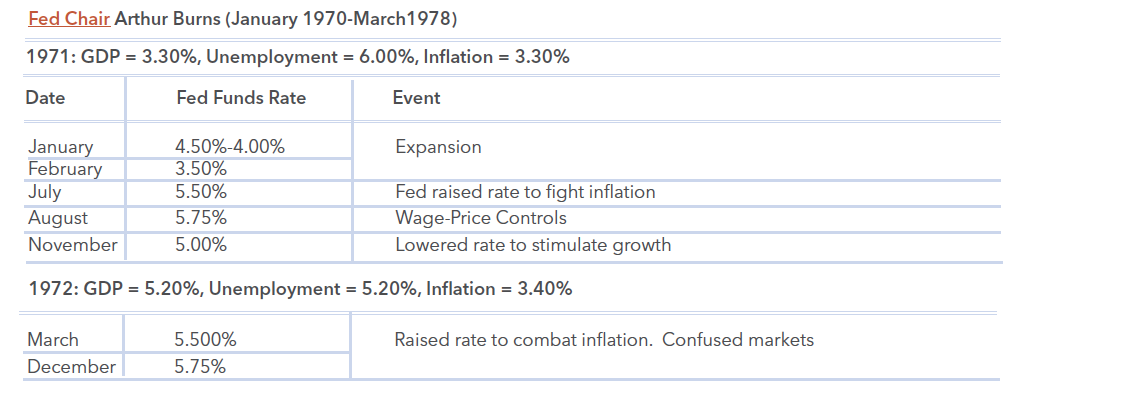
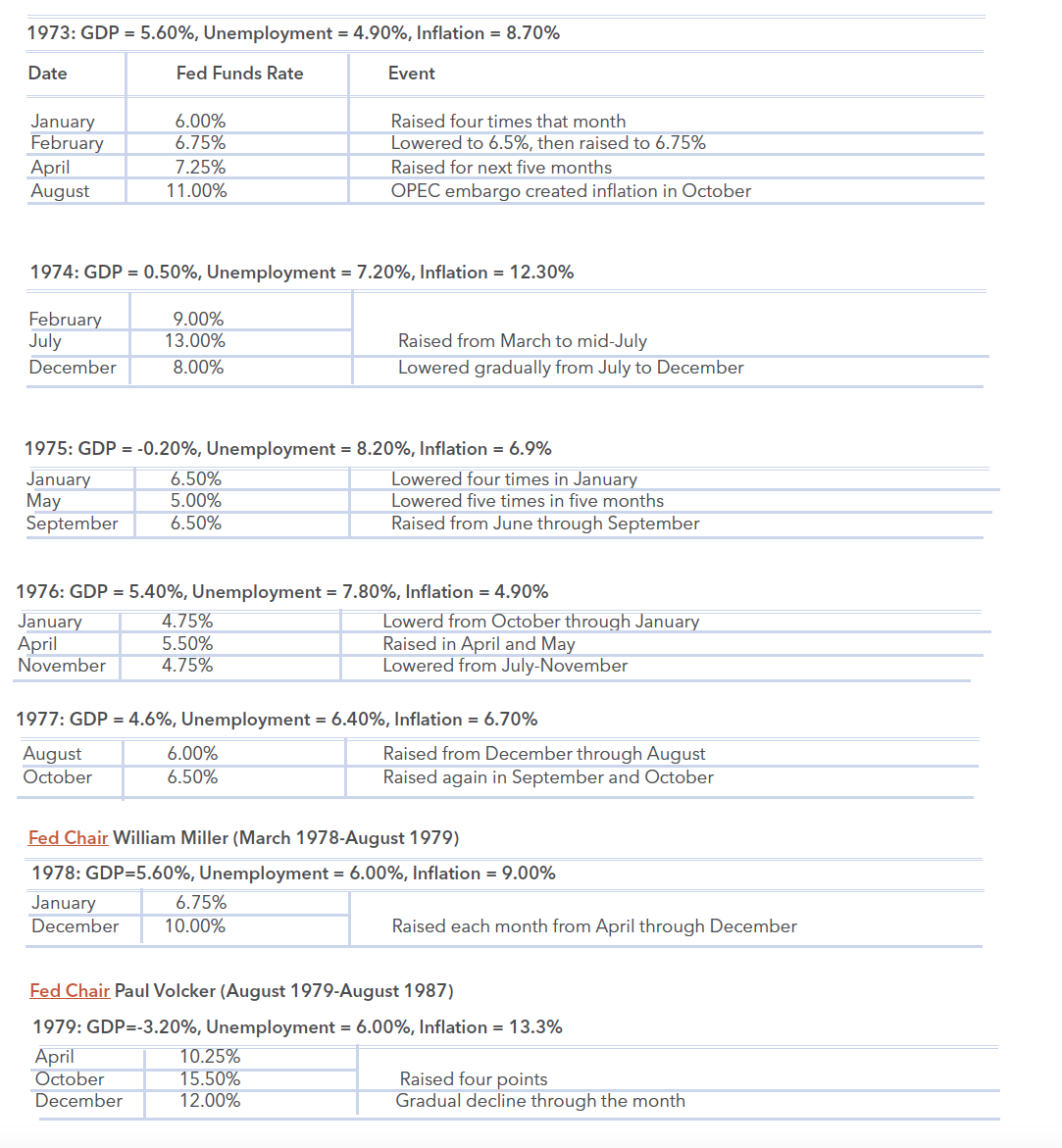
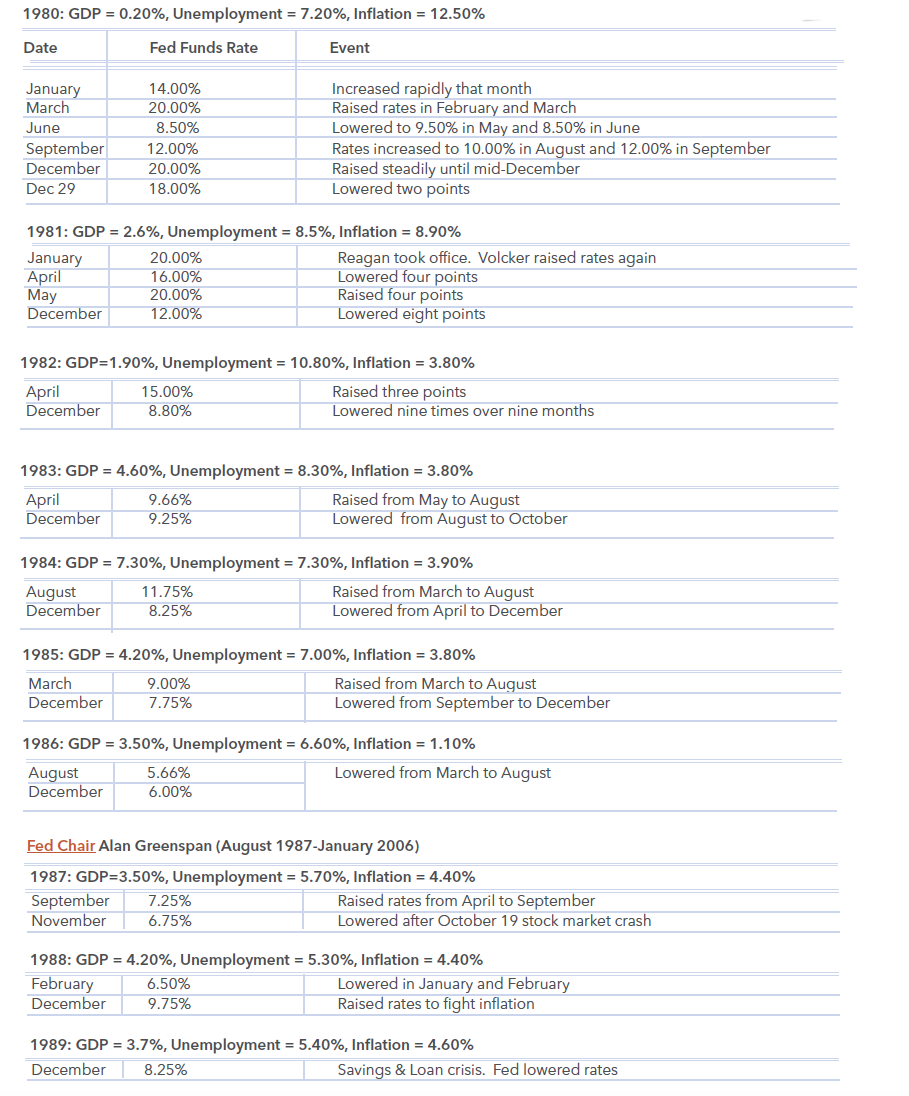
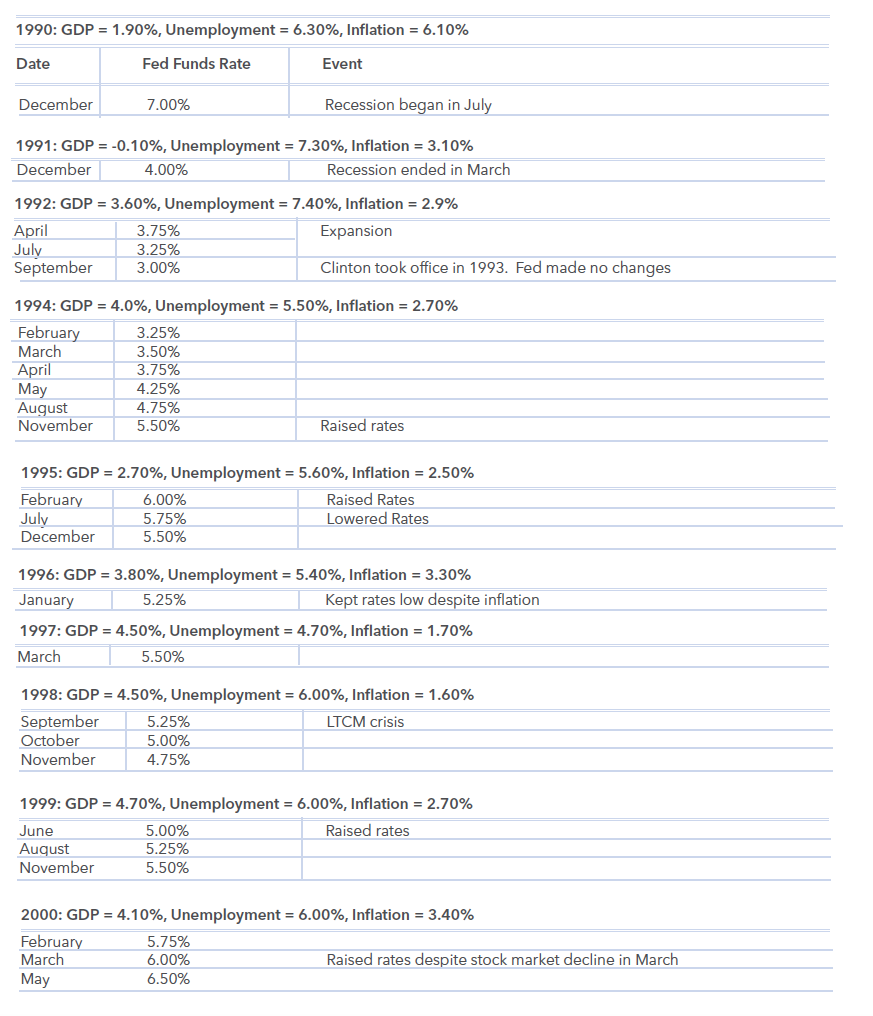
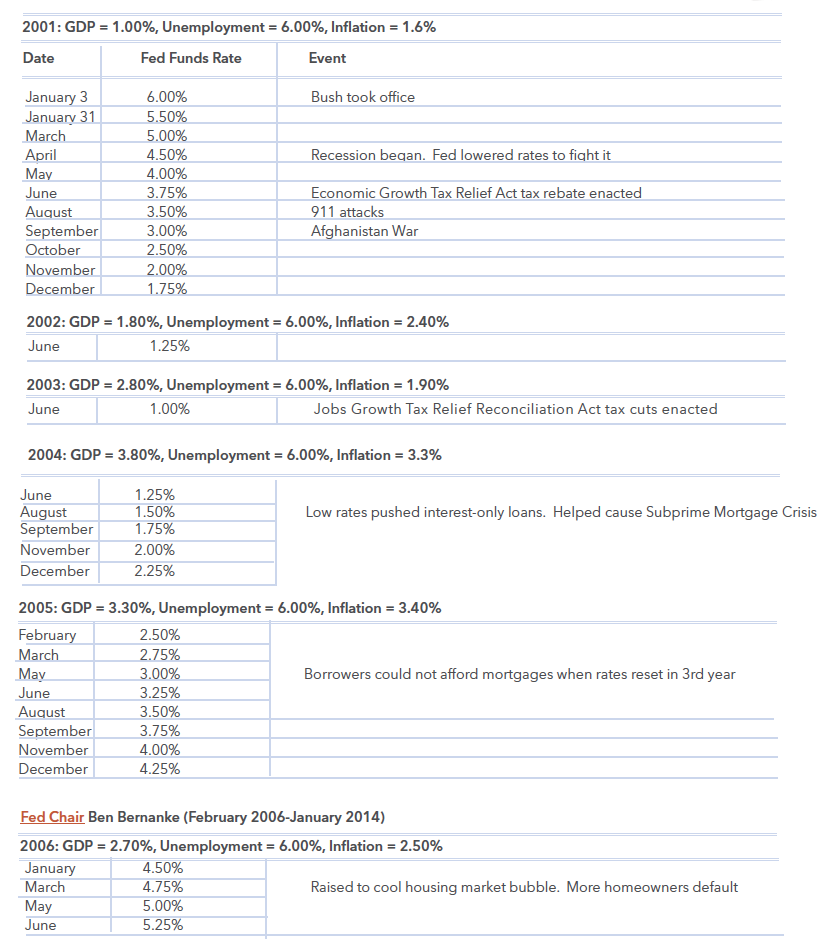
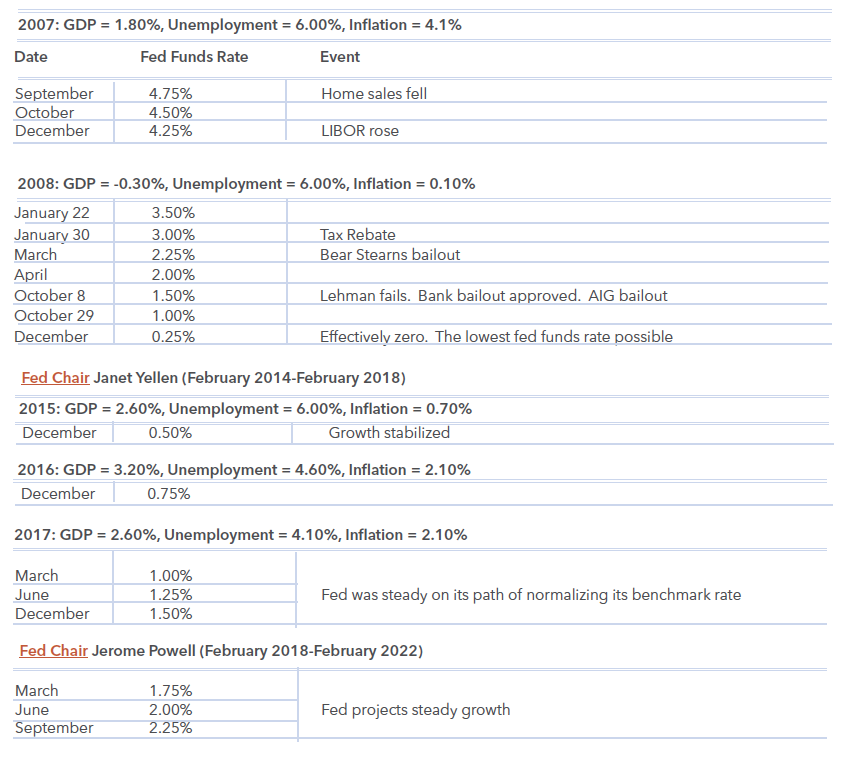
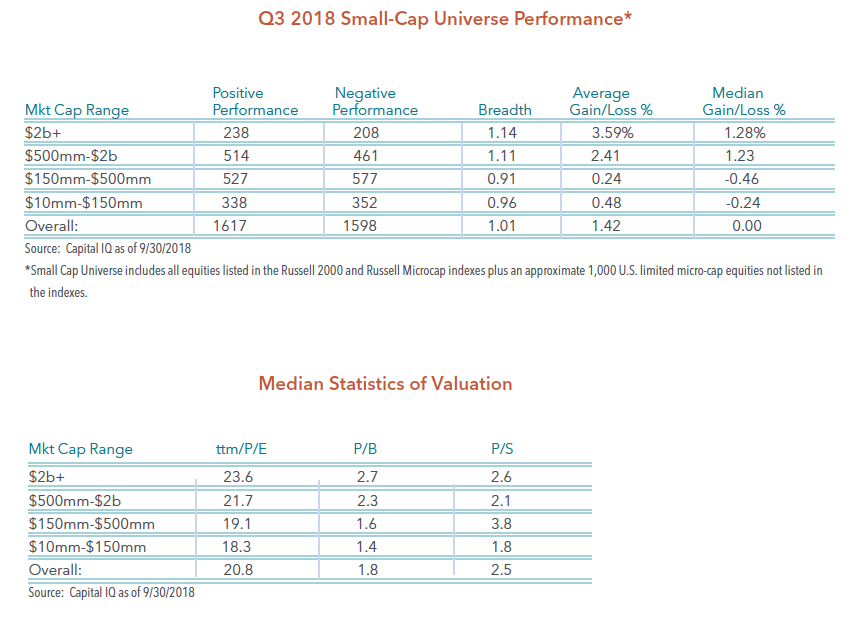
Dr. Gerald W. Perritt
“We are sad to report the loss of our founder, friend, teacher and mentor. Dr. Perritt was a pioneer in the mutual fund industry. He was one of the first in the industry to track performance and industry dynamics, and to champion mutual funds as an investment option. He launched The Mutual Fund Letter in 1981, a monthly newsletter tracking the mutual fund industry. Dr. Perritt’s flagship newsletter was Investment Horizons where he recommended micro-cap stocks. He also created the Perritt MicroCap Opportunities Fund, one of the first micro-cap mutual funds, in 1988,” stated Michael Corbett, the current CEO of Perritt Capital Management.
Dr. Perritt was a prolific writer, sharing his insights and expertise through newsletters and several books, including Small Stocks, Big Profits, Mutual Funds Made Easy, and Expanding Your Investment Horizons. He was also a columnist for Forbes Magazine. Dr. Perritt was frequently quoted in such publications as The Wall Street Journal and Barron’s Magazine. He was always generous to share his wisdom, knowledge and experience with his staff, grooming successful investors.
Teaching was a passion for Dr. Perritt. He taught and mentored many throughout his illustrious career. He served as a professor at several prestigious universities, including Ball State University, Babson College, University of Miami and DePaul University.
Michael Corbett added, “our thoughts and prayers are with Dr. Perritt’s family and loved ones.”

Perritt Funds Tax Distribution Update
The Perritt MicroCap Opportunities Fund, the Perritt Ultra MicroCap Fund and the Perritt Low Priced Stock Fund will pay a long-term capital gains distribution on 11/14/18 to shareholders. Based on our estimates:
- The long-term capital gains distribution in the Perritt MicroCap Opportunities Fund (PRCGX) will be approximately 12%, roughly 6% in the Perritt Ultra MicroCap Fund (PREOX), and about 5% in the Perritt Low Priced Stock Fund (PLOWX).
- Any income or short-term gains in our Funds will be paid on 12/27/18 to shareholders of record on 12/26/18.
Long-Term Capital Gains distribution:
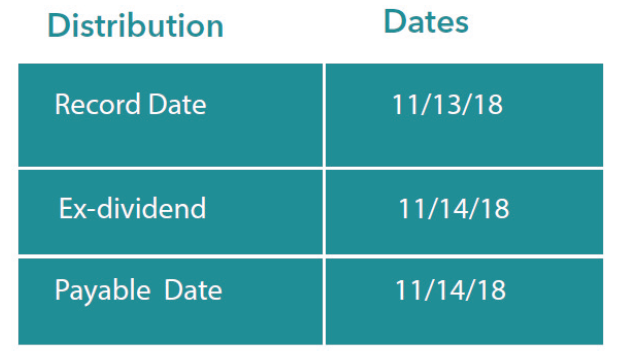
Distribution figures and distribution dates are estimates only and are subject to change. Actual distributions may be substantially different (higher or lower) or may not be distributed at all.
Actual distributions on a dollar per share basis will be available on or after 11/14/2018.
Any tax or legal information provided isn’t an exhaustive interpretation of some of the current income tax regulations or legal counsel for advice and information concerning their particular situation. Neither the Fund nor any of its representatives may give legal or tax advice.
Manager Commentary, 1st Quarter 2018
JEKYLL and HYDE QUARTER
The first quarter of 2018 was remarkable in several ways. We saw record highs in equity markets, but also a fierce resurgence in volatility. To some degree, the first quarter was a Jekyll and Hyde type of period. The first half of the quarter was characterized by a low volatility, momentum driven, continuation of the themes that carried 2017. While the second half of the quarter brought in a new regime, with explosive volatility, a refocusing of investors attention on fundamentals, and new leadership in the market. The rest of our commentary this quarter will help explain how the Perritt MicroCap Opportunities Fund (“the fund”) performed during these two distinct market environments, and the reasons behind that performance.
As an active manager, the fund has a less than 1.0 correlation to its benchmark as of 3/31/18. This is driven by distinct sector weight differences, weighting of individual stocks in the portfolio, and stylistic investment differences from the composition of the benchmark. The fund has regularly experienced significant positive and negative deltas in performance relative to the benchmark.
Below is a chart of the rolling delta of trailing 12-month performance between the fund and the Russell Microcap Index (“the benchmark”) as of 3/31/2018:
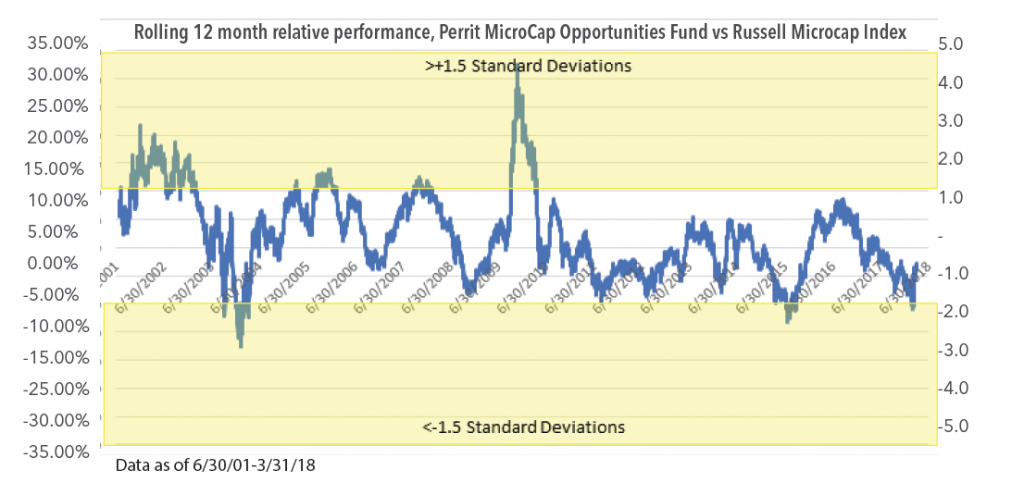
Click here for performance.
Performance data quoted represents past performance; past performance does not guarantee future results. The investment return and principal value of an investment will fluctuate so that an investor’s shares, when redeemed, may be lower or higher than the performance quoted. Performance data current to the most recent month end may be obtained by calling 800-331-8936.
We find the 12-month rolling performance delta, from the 6/30/2000 inception through 3/31/2018, to be a highly mean reverting series. The average 12-month performance delta since the inception of the benchmark data (6/30/2000) is +2.3%, reflecting our long-term outperformance. The standard deviation is 7.2%, which indicates that there can be periods where we significantly outperform or underperform.
On a trailing 12-month basis, our performance relative to the benchmark Russell Microcap Index during the first quarter of 2018 reached -10.83%. This represented -1.8 standard deviations from our mean rolling 12-month performance since 2001. An extreme that lies in the bottom 98th percentile of relative 12-month returns. This was an outcome we were quite unpleased with, but one we understood to be an extreme, and yet, also not unprecedented. After being participants in the U.S. Microcap equity market for nearly 30 years, we understand cycles, even extremes ones, come and go. Historically however, +/- 1.5 standard deviations has been a reliable inflection point for mean reversion of our relative performance.
In the final analysis, we believe a confluence of market factors led to this recent period of underperformance, which hit a nadir in the middle of the first quarter of 2018. We trace the sources of this underperformance to the following factors: 1) disproportionate share of market gains being produced by narrow segments of the market, which we do not participate in, 2) outperformance of larger markets capitalization names within the index, vs. the sub-$500mm market capitalization segment we target, 3) stylistic headwinds, namely growth outperforming value, and 4) larger errors of commission than our historical average. It was our belief that many of these factors are reliably mean reverting. And thus, we expected performance to rebound from the February lows. Which it did in the second half of Q1, wonderfully.
We expect our performance to continue to positively and significantly mean revert. Despite the cyclically of underperformance and outperformance periods, the fund has outperformed its benchmark since inception.
Drivers of Recent Underperformance
1. Concentration of benchmark performance in Healthcare (Biotech/Pharma) and Technology (Internet Software/Software):
Below is the Russell Microcap Index attribution from 3/7/2017-3/7/2018. This period captures the trailing 12-month period ending at the low point of our recent underperformance cycle.
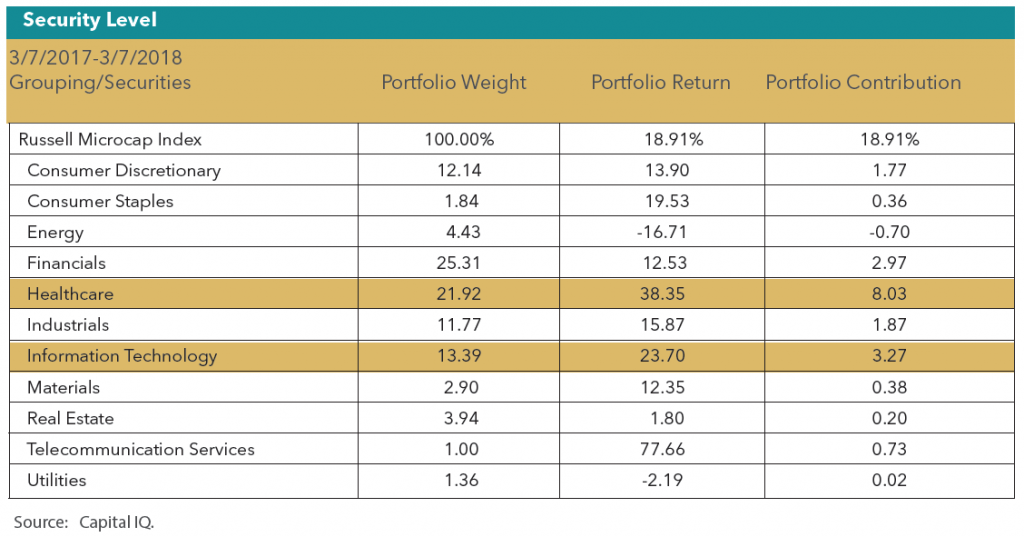
The Russell Microcap Index gained 18.91% from 3/7/2017-3/7/2018. However, the majority of sectors “underperformed.” Two sectors alone drove 60% of the index performance. Healthcare, which gained +38.35%, added +803bps to the return and technology, which gained +23.70%, added +327 bps to the return.
The Telecomm sector performance was primarily driven by a single company being acquired (STRP), and the sector’s low weighting (1.0%) causes the contribution to be relatively immaterial. The Healthcare (index weight of 21.9%) and Technology (index weight of 13.4%.) sectors were the strongest contributors within the Russell Microcap Index.
Roughly 40% of the index performance has been concentrated in the subsectors of Biotechnology, Pharmaceutical and Software. As a value-oriented manager who strives to build a portfolio of securities issued by companies with sustainable, profitable business, we find ourselves unable to generate many investable ideas in these subsectors. During the prior year, the fund maintained a 0% exposure to the Biotech/Pharma sectors, and a 2.8% exposure in Software, all significantly below the benchmark weights.
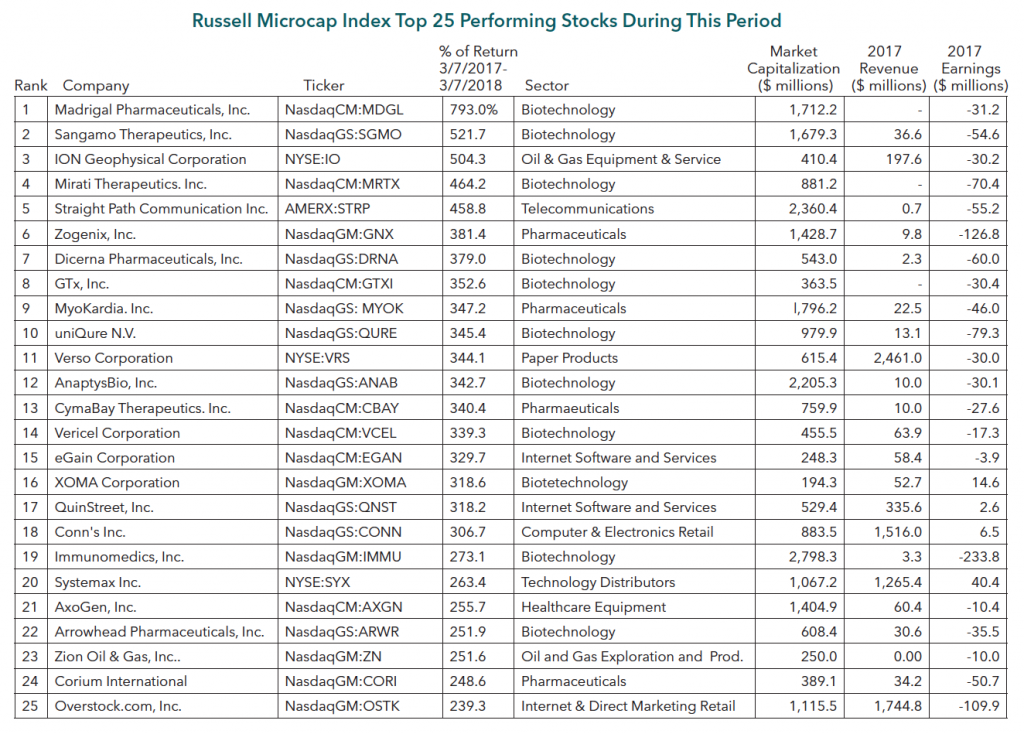
Of the top twenty-five performing stocks in the index, fifteen are Biotech/Pharma related. Of those same twenty-five, only four are profitable companies, and nine have $10mm or less in revenues.
The top 25 performing stocks show an unusual degree of extreme price performance with an average gain of 359%, as well as narrow industry concentration.

2. Performance By Market Capitalization segment 3/7/2017-3/7/2018:

Stocks with larger beginning market capitalizations significantly outperformed stocks of smaller sized companies. The fund targets companies with market capitalizations of less than $500mm, and has a median market cap of $309mm.
3. Growth vs. Value

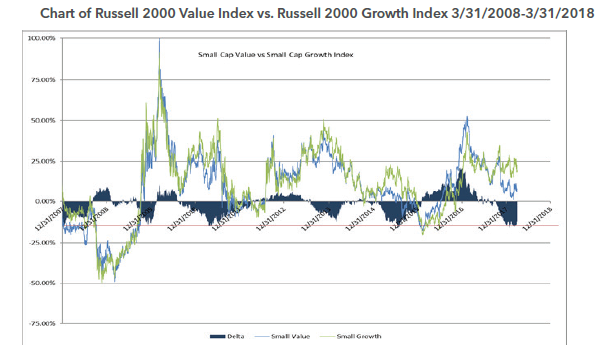
Growth has significantly outperformed value in the previous 14 months. We find growth vs. value relative performance to be highly mean reverting. The level of growth outperformance reached in Q1 2018 has previously been an inflection point a number of times over the past 10 years.
We also measure growth vs. value by the performance of securities grouped by valuation:

Higher multiple stocks have significantly outperformed stocks trading at lower valuations. The fund median revenue multiple is currently approximately 1.0x, less than half the Russell Microcap Index median revenue multiple of 2.1x.

As a value focused manager, we have historically managed the fund with a significantly lower level of valuation than the broader markets and benchmark. We find broader market valuations to currently be well above average. In our opinion, the securities we have in the portfolio provide a better long-term risk/reward opportunity.
4. Errors of Commission
The fund’s top and bottom performers as measured by contribution to the fund’s performance:

As our mission has always been, the fund has continued to capitalize on unique opportunities we find in the microcap asset class. Our top five performing positions contributed +635bps to our return. However, our bottom five performing positions detracted -423bps. While it is of significant importance in our minds to have your winners contribute more than the losers detract, the spread of winners-losers was less than we target. Historically, we have a positive spread in our top five vs. bottom five. In the preceding 5 years (2011-2016), we had a ratio of top five contribution to bottom five detraction of roughly 3:1. In the recent period this ratio is 1.5:1. The narrower spread has been driven by larger than historical detractions by individual positions.
Mean Reversion and the Performance Turnaround
As we’ve now stated many times in this commentary, we firmly believed our performance had potential to recover based on the historical evidence that many of the drivers of our underperformance we’re reliably mean reverting. From 3/7/2018 through the end of the quarter, the Perritt MicroCap Opportunities Fund gained +2.97%, while the benchmark declined -2.86%, for a performance delta of +583bps in three and a half weeks! This cut our rolling 12 month performance delta to the benchmark down to -3.06%.
While we believe that the securities purchased for the fund’s portfolio trade at significant discounts to intrinsic value, the timing of the realization is often highly uncertain. In many cases, securities can trade at a significant discount for years. This can weigh on fund performance in the short term, as we hold these securities awaiting closure of the intrinsic value to market value gap. In our experience, the gap to intrinsic value, which may have been stubbornly persistent for years, can dramatically narrow in very short periods of time. As examples, we saw this dynamic in late Q1 in our top two holdings, BXC and ADUS.
BlueLinx Holdings Inc. (BXC), our top holding, is a stock that had underperformed the market for years. The company recently announced two major catalytic events, a real estate divestiture and an acquisition, which we had anticipated, and the stock moved from the $15 range to $32 to close the quarter (and now $41 as of 4/23/2018). This is a 100%+ gain in a 3 week period from a stock which had “gone nowhere” for years.
Addus Homecare Corp. (ADUS), our second largest holding, presents a similar, though admittedly, less extreme case. Nevertheless, ADUS highlights how quickly the performance contribution from a single position can change from being a detractor to a contributor. We have held ADUS for many years and have a cost basis of less than $7 per share. The stock closed the quarter at $48 (and is $54 as of 4/23/2018). Though a significant contributor to long-term performance, it is not a consistent contributor to performance. As an example, the stock closed 2017 down -1%, vs. a gain for the Russell Microcap index of +13%. ADUS was a significant drag on the Fund’s performance for the calendar year 2017, despite being a hugely successful long term holding. After announcing an acquisition in Q1 2018, the stock moved from ~$34 to $48 to close the quarter. The stock is now again outperforming the market, and a positive contributor to relative performance.
The combination of reliably mean reverting factors reversing from a headwind to a tailwind, discussed at length in this commentary, and the opportunity to generate significant individual security alpha, gives our team confidence in our ability to seek to continue our long-term outperformance going forward.
Manager Commentary, 4th Quarter 2017
YEAR IN REVIEW
Worry?
There is an old saying on Wall Street that the markets climb a “Wall of Worry.” The past quarter and year certainly had several concerns, but the markets continued higher and finished the year at all time highs. Some of these recent concerns were several Hurricanes. Hurricane Harvey came first, pummeling Houston on August 25th. Less than two weeks later, Irma battered the Caribbean and Florida. Jose and Maria followed shortly after, striking the Caribbean and crushing Puerto Rico’s infrastructure. The cost is estimated to be in the hundreds of billions of dollars and will take years to repair. The financial markets hardly noticed.
Hurricanes were not the only concern. There were political debates over health care, the debt ceiling, the National Football League and the Russian investigation. Then there were words raged between North Korea’s supreme leader Kim Jong Un and President Donald Trump. The belated announcement of a data breach at Equifax, potentially impacting nearly one in every two Americans, increased the already big concern about cybersecurity. How about all the Trump Twitter Tweets? It goes on and on. I think you get my point. The bottom line is that it seems that nothing will bring this market down, and it continues to climb that “Wall of Worry.”
Market Results

For the fourth quarter of 2017, large stocks continued to be the leader. The S&P 500 Index climbed more than 6% in the fourth quarter and rose by more than 20% for 2017. Smaller stocks performed well, but lagged their large cap brethren. The table above shows the performance results for the small/micro-cap indexes from Frank Russell & Company. During the past year, growth trumped value in both small-cap and micro-cap indexes. However, value outperformed growth within the micro-cap indexes in the fourth quarter. We are not sure if value’s leadership within micro-cap stocks is in a leadership reversal.
A deeper drive into the small/micro-cap universe shows that while the breadth was strong, it was not as strong as one might think given the gains last year. The table below shows the number of stocks that posted gains versus the number of stocks posting losses last year. Of the 3,244 publicly traded small/micro-cap stocks, 1,878 rose last year while 1,366 declined last year. A more interesting data point is that while the standard stock climbed nearly 15% last year, the median gain was only 5.51%. To us, the true standard company’s stock did not perform well last year. We believe there is a decent chance that the standard stock may do better in the future. Let’s look at several factors that could influence small/micro-cap stocks in 2018.

Interest Rates
Including yours truly, there have been many professional investors that have been forecasting higher interest rates for many years. The Federal Reserve spent the past year beginning the process of resetting short-term interest rates. Bond vigilantes may follow this year and reset yields. However, there have been several times in this recovery when bond yields attempted to rise only to be terminated and reversed. The obvious reason for this is that the U.S. economic data turned soft, but we think most of the blame came from other markets, which included Eurozone blowing up, China economy slowing, or various other global economic issues. This period, however, the U.S. recovery is broader, global recovery is more synchronized, confidence is stronger among businesses and individuals, and we are closer to full employment than ever.
The 10-year Treasury yield is currently just above 2.60%, which is up from 2.12% from July 2017 and 1.46% in June 2016. While inflation is still relatively low, it appears inflation is rising, and more importantly, inflation expectations appear to be on the rise. Should evidence support an increase in inflation, it should force yields to head even higher. Bonds have been in a bull market for more than 30 years, but given the current economic backdrop we believe the bond bull market is over. Even the charts support this theory. If you examine the long-term trend line of all the government bond yields, you will see most government bonds have broken their long-term trend line. The 30-year Treasury Bond is the only bond that has not broken the long-term trend line. We believe once the 30-year Treasury Bond breaks its long-term trend line, the bond market will officially enter a bear market. We have often said that rising interest rates are not a bad thing for smaller stocks. Smaller stocks have performed well in rising interest environments. Please refer to our white paper on Interest Rate Hikes and Small Cap Returns.
Tax Cut
The Trump Administration was successful in lower taxes for corporations. It depends on your individual situation, but taxes were lowered for some individuals too. The corporate tax rate was permanently lowered from 35 percent to 21 percent, which brings the rate closer to countries like Canada at 15 percent and Ireland at 12.5 percent. Analysts are busy reviewing financials to adjust their earnings estimates for 2018 and 2019. Since several companies have operations around the world and some have tax deferred assets that need to be adjusted or written down, the adjustment to earnings estimates is not that easy. We, and many analysts have a great deal of homework. Earnings estimates need to be adjusted for these new facts. Regardless, estimates for the several companies will be on the rise, which we believe should be a net positive for stock prices. In addition, we believe higher corporate profits and increased cash flow should bode well for merger and acquisition activity. As you may have seen from our research, as of 12/31/17 nearly 60% of all public merger and acquisition activity occurs at the micro-cap level. Please refer to our white paper on Top 10 Reasons to Invest in Microcap.
U.S. Economy and Global Growth
The U.S. economy experienced two quarters in a row of economic growth above 3%, and unemployment is near a 50-year low. The Trump Administration continues to lobby for its pro-growth agenda. The pro-growth agenda includes slashing onerous regulations that have stifled business, a proposed $1 trillion infrastructure spending schedule for this year, a signifi- cant increase in military budget, and the already passed tax cuts discussed above.
Global growth is improving overseas too. We are in the middle of a global economic growth recovery which has provided strong support for market gains. For the first time since 2007, all 45 economies tracked by the OECD (Organization for Economic Co-operation and Development) Composite Leading Indicators Index have positive GDP growth for the year. Furthermore, despite minor interest rate increases in the U.S., global central bank policies remain very accommodating with low interest rates around the world. Most importantly, recession risk in the next year could be low.
There are few excesses you would normally associate with a recovery like this one. Both household and businesses have strong and liquid balance sheets, and will likely improve with the recent tax cuts. The Leading Economic Indicators (LEI) just rose to a new all time high. In our view, the U.S. has not experienced a meaningful capital spending cycle since the Dot-com boom in the 1990s, but we believe the conditions are more conducive for investments. We would not be surprised if the U.S. economy produces growth near 4% or more in one of the quarters this year.
Valuations and Investment Outlook
Given the fact that stock prices rose by double digits in each of the past two years, and corporate profits rose, but by less than stock prices during that period, one should be concerned about valuations. We certainly agree that valuations are not cheap. Just review the table below. This is the small-cap universe of 3,244 companies broken down for various market capitalization ranges. The typical company within the small-cap universe trades at more than 22 times trailing earnings, which is not cheap in our opinion. However, with the economy still improving and corporate tax cuts now in place, earnings growth should be very robust this year, which means valuations may be lower in the future.
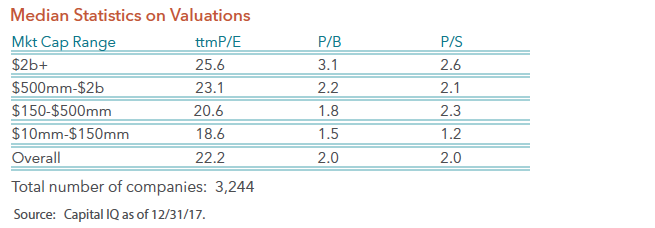
Given our thoughts on interest rates, tax cuts, and the global economy, our investment focus remains on capital good sectors. Throughout most of the bull market, leadership has been concentrated among consumer stocks and bond surrogates. However, investment spending seems to be in a position to drive the capital goods area. We view the four major capital good sectors as technology, industrial, materials, and energy. We believe technology represents the leaders and are characterized by string secular unit growth. Industrials offer a play on global infrastructure revival. Materials are the quintessential inflations play in the economy, and are likely to face intensifying overheat pressures. Lastly, Energy offers a contrarian play, but good value which could benefit from rising inflation and higher yields. While we will not entirely ignore the other sectors of the economy, it is likely that these capital good sectors will be our larger weights within the portfolios.
Manager Commentary, 2nd Quarter 2017
2nd QUARTER REVIEW
The second quarter performance for the stock market was very much like the first quarter performance. Large stocks performed well and growth stocks outperformed value stocks. The table below details the performance for large stocks and small stocks for both the second quarter and year-to-date.
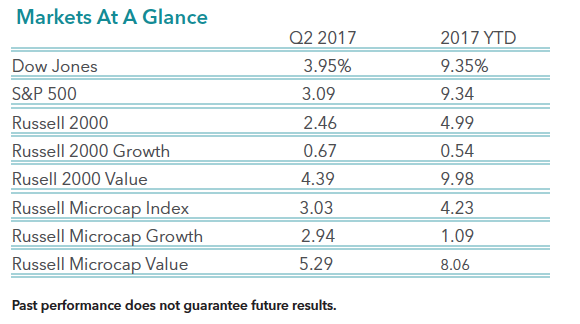
Whether it is large stocks or small stocks, technology and healthcare stocks continue to dominate the performance charts. The table below provides the performance results for each sector within the Russell Microcap Index. As you can see, technology and healthcare stocks were the only stocks that produced double digit returns through the first six months of the year. It has been a very poor period for consumer and energy stocks, as they declined significantly during the past six months.
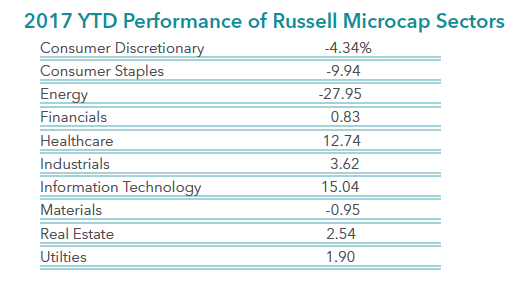
While the equity markets have performed well in the past six months, most of the gains are attributable to multiple expansion. As fundamentalist, we would prefer to see decent revenue and earnings growth along with strong price appreciation. We, and many other strategists, believe earnings growth will improve dramatically in the next year or two. This confidence in future earnings growth makes us believers in this bull market. However, valuations across the marketplace are starting to look rich. The next table below outlines three valuation measures for the large cap Russell 1000 Index and the small stock Russell 2000 Index and the Russell Microcap Index. While not at peak valuations levels, these multiples are lofty relative to anytime in history.

The chart below shows the historic price-to-sales ratio of each index we reviewed above, as well as the historic price- to-sales ratio for our flagship MicroCap Opportunities Fund. As you can see, large cap valuations on this chart have been going straight up for about a year and a half, and are now at peak valuations. The Russell 2000 and the Russell Microcap Indexes are near peak valuation levels too, but remain well below the valuations of the large-cap Russell 1000 Index. While our MicroCap Opportunites Fund has almost always traded at lower valuation levels than that of the market indexes, the Fund is now trading at the widest discount to the indexes in 24 years. This valuation discount gives us confidence in our portfolio of companies versus that of the rest of the market. (The current P/S ratios for the Perritt Ultra Microcap and Low Priced Stock funds are also significantly lower than the market at 1.16 and 1.39 respectively.)

Manager Commentary, 1st Quarter 2017
1ST QUARTER REVIEW
The first quarter of 2017 was an interesting quarter in that performance was a reversal of 2016 and particularly the fourth quarter of last year. As you can see from the table below, larger stocks outperformed smaller stocks. As measured by the S&P 500 Index, large stocks gained more than 6 percent while micro-cap stocks barely produced a gain, as the Russell Microcap Index rose by only 0.4 percent. In addition, growth stocks outperformed value stocks in the first quarter, which is also the opposite of what happened last year.
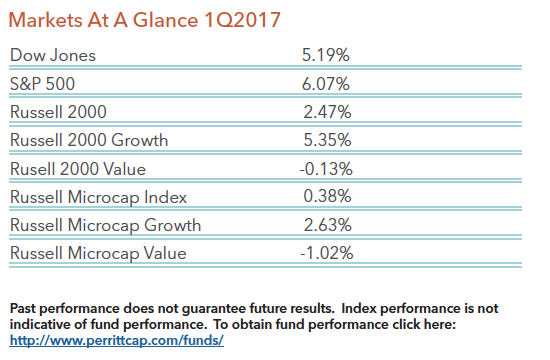
While not a surprise, the internals of the markets show us exactly why growth stocks outperformed value stocks. Below is a table of the best and worst performance for each sector within the S&P 500 Index, as well as the best and worst performance for each sector within the smaller-cap market. Technology and health care sectors were best performers in the first quarter. Technology and health care sectors are typically found within growth-oriented indexes, while energy and financials can be found in value-oriented indexes.
A closer look within each of these sectors reveals that high return on invested capital (ROIC) companies performed worse than the rest of the market in the first quarter. For example, the top 25% of ROIC companies’ stocks declined 1.91% versus a 2.86% gain for the bottom 25% of ROIC companies. We view this recent underperformance as a short-term reversal from the past year, but not a change in trend. In other words, high quality companies have been the leaders in the past year, and we expect them to resume their leadership later this year. Let’s review a few of the reasons we remain optimistic.
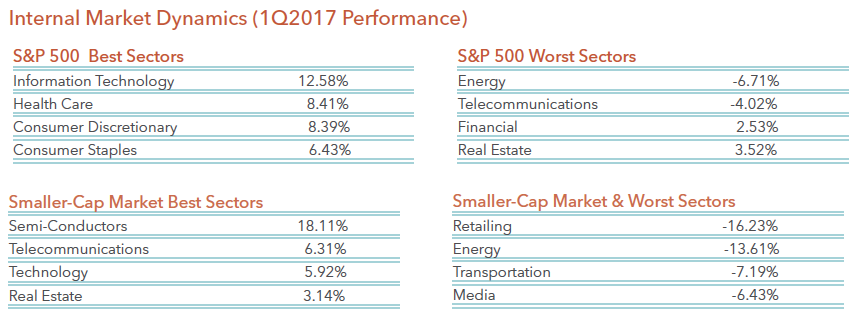
First, we believe we are still early in the bear market recovery or new bull market for smaller-cap stocks. As we noted in our commentary a year ago, the bear market for smaller companies ended on February 11, 2016. Since that date, smaller companies have performed well, but certainly not in a straight line. We also noted in our commentary that bull markets usually don’t end within a year. Bull markets tend to last at least a few years. We updated our tables of bear market recoveries below. As you can see from the two tables below, the 6-month and 12-month performance for the current recovery are approximately 10 percentage points behind the average for the Russell 2000 Index, and approximately 12 percentage points behind the average for the Russell Microcap Index. These results give us confidence that the future 3-year performance for the current cycle could be similar to the past averages.
Second, we are forecasting strong earnings growth for smaller companies. While earnings growth in the past year was only slightly positive, we have indications that earnings growth should improve in the future. According to our internal research, we believe earnings growth should be in the double-digit range this year, as well as next year. While valuations are not cheap, strong earnings growth should justify current stock prices as well as higher prices in the future.
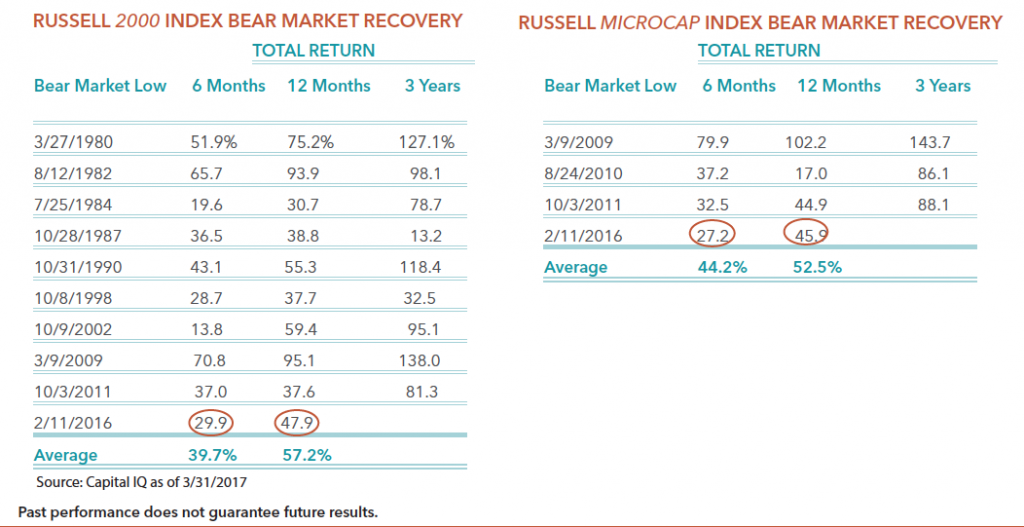
Lastly, the Trump Administration has several initiatives that are pro-business. Some of those initiatives include tax reform, regulation reform, and various infrastructure improvements. While it is unlikely that most of these initiatives will make it past congress, some will, which will be positive for equity markets.

Manager Commentary, 4th Quarter 2016
SURPRISE!
The fourth quarter and 2016 brought several surprises to investors. Fortunately, many of those surprises were positive. The first surprise came earlier last year when the British decided to exit the Euro (Brexit). While initial market reaction was negative, the proceeding weeks that followed was a strong rally for equity investors around the world. The next surprise occurred in the fourth quarter when Donald Trump won the Presidential election and the Republicans swept control of Congress. Once again, the initial market reaction was negative, but the stock market rebounded by more than 10% in less than two weeks from the low on election day. While it makes intuitive sense that the stock market would rally, I believe most investors were surprised by the rally, particularly the degree of the rally.
As you can see from the table below, the fourth quarter and year were very fulfilling for investors. As measured by the S&P 500 Index, large stocks rose 3.82% in the quarter and finished up nearly 12% for the year. For the first time since 2013, small stocks Trumped (sorry I couldn’t resist) large stocks. As measured by the Russell 2000 and the Russell Microcap Indexes, smaller stocks rose 8.83% and 10.05% in the quarter and 21.31% and 20.37% for the year, respectively. These results were a surprise to most strategists, including yours truly! While we expected a positive return for smaller stocks and better performance relative to larger stocks, the surprise was a return greater than 20% in both indexes for the year.
The strong results last year were certainly a nice surprise, but it does concern us that we might be borrowing returns a bit from the future. The Russell 2000 Index trades at more than 20 times earnings, which is the highest level since 2001. However, earnings growth is expected to be near 15% and could be much higher if Trump is successful in lowering corporate taxes. Another concern is that if the Federal Reserve hikes interest rates too aggressively, it could slow economic growth. The bottom line is the strong rally in the past year might be priced in the market already.
As we have said, this past year has been full of surprises, and it wouldn’t surprise us if next year was similar. For many strategists, the ritual of predicting the future is just an ego trip. As Benjamin Graham inferred, forecasting where the markets will be a year from now is nothing more than rank speculation. We prefer to focus on what we view as quality companies for our funds and review history as a guide of how the future may be formed. The table below is the annual performance of the S&P 500 Index, the Russell 2000 Index and the delta of these indexes performance. Small stocks tend to perform in streaks. That is, once they perform well in one year, they tend to perform well for several years. Since last year was the first year small stocks outperformed in a couple years, we believe the odds are above average for another strong year in 2017 for small stocks. We outline this small stock performance lesson in a white paper entitled Deja vu All Over Again: Serial Correlation and Micro-Cap Equities.
Finally, according to Investment Company Institute, we estimate that investors have pulled nearly $1 trillion from domestic equity mutual funds and domestic ETFs since 2005. This level of investor redemptions is unprecedented. Since Trump’s election though, investors have started pouring money back into domestic funds. We estimate that investors have purchased more than $25 billion of domestic mutual funds and ETFs in the past two months. We believe the 2017 surprise could be that individual investors continue that buying frenzy of domestic equities, which could help power equity prices higher again.
The State of the IPO Market
What Makes for a Good IPO Investment? A Whitepaper on IPOs since 2012
Investors continually debate the value of initial public offerings, or IPOs. On the one hand, investors see the soaring initial returns for a company after its IPO, and want to know how to think about investing in such a stock, and perhaps how to invest in the opportunity. On the other hand, many IPOs “break”, or fall below the initial offering price, at some point sooner or later after the IPO date, and investors then regret jumping into the stock.
- Is an IPO a chance to invest on the ground floor of a potential winner, or a trap for investors that benefits only the founders and their bankers?
- Is a broken IPO a failed investment, or a hidden opportunity?
We set forth to understand the factors these days that drive performance of stocks after an IPO. We want to know what drives value, what causes an IPO to break, and how smart investors can take advantage of IPOs for individual portfolios. Many other scholars and analysts have researched IPOs over the decades. One of the most cited efforts, studying IPOs from 1975-1984, affirms that IPOs perform well in their first few days or weeks, followed by as many as three years of underperformance.(1) A similar analysis affirms this conclusion, with the additional finding that the timing, both for the IPO and for the period analyzed, can affect the results.(2)
We applied the approach from this research to more recent IPOs, to see what we can learn about the environment in the past few years.
- Performance of an individual IPO depends mostly on valuation of the shares at the time of the IPO. Not surprisingly, companies with higher valuations tend to decline in value sooner or later after an IPO while companies with more moderate valuations improved.
- IPOs are more “popular” in some instances than in others. By this we mean the timing (year) of the IPO and the industry sector also influence performance. IPO pricing and valuation was higher in some years and for some industry sectors than in others. In this analysis, IPOs from 2012 and 2013 per formed better than ones from 2014 and 2015. IPOs in biotechnology per formed worse than those in other industry sectors.
- A relatively smaller number of IPOs have outperformed the rest significantly. An astute investor can find suitable IPOs for investment, if he or she has the discipline to invest at reasonable valuations, and the patience to allow IPO companies to reach that valuation.
Over 700 IPOs
We assembled a data set of all US IPOs from 2012 to the present. This data includes 721 individual companies that undertook an IPO from January 1, 2012 to March 31, 2016 (Table 1).
These companies varied considerably in size. The smallest were under $10 million in market capitalization at the time of the IPO. The largest were in the tens of billions of dollars, including Facebook (NasdaqGS:FB) at $82 billion in 2012 and Alibaba Group (NYSE:BABA) at $231 billion in 2014. The average market capitalization for all IPOs in the data set was $1.54 billion at the time of IPO.
We immediately see some interesting results for these companies.
Overall, negative returns: The median share price return was -7.7% since the IPO date. Yet, the average share price return was 8.7%, suggesting that a small number of very strong performers dominate IPO performance. (Note the return statistics presented represent total share price change since IPO, and are not annualized or adjusted for performance compared to a benchmark.)
Valuation declines: Valuation, expressed as the ratio of total enterprise value to trailing annual revenues, declined significantly since the IPO date. Yet, some companies dominate the valuation. As of the IPO date, the median valuation was 5.8. As of today, the median valuation declined to 2.3, less than half of the valuation on the IPO date. Similar to returns, a small number of IPOs outperformed the others.
The average valuation as of the IPO date was 17.4, reflecting very high valuations for a small number of companies. This average valuation declined to 9.6 as of March 31, 2016.
Larger Companies Performed Better
We analyzed IPO performance relative to company size. We divided the data set into four market capitalization groups (Chart 2).
Among these groups, the largest companies performed better than small ones (Chart 1).
Small cap value investors should find this result encouraging. It suggests a large number of companies that went public since 2012 could represent an attractive investment.
Smaller Company IPOs Broken More
IPOs that “break” trade below the initial offering price. They can do this at any point after the IPO date. Broken IPOs may offer an attractive investment opportunity:
- On the one hand, an IPO with a current price below the IPO price may offer the potential returns that first-day investors sought, but at a reasonable price
- On the other hand, a broken IPO may break for a good reason, namely first-day investors mispriced it, and believed they jumped into an opportunity that was likely to deliver suitable value.
For purposes of this analysis, if an IPO trades below the IPO price as of the date of this analysis (January 2016), then it is considered broken, without regard to the date of IPO.
Within the data set, more IPOs were broken (421) than unbroken (300) (Table 3). The market capitalization of the broken IPOs was considerably smaller, at an average of $921 million, compared to $1.56 billion for unbroken IPOs.
Similarly, smaller companies were more likely to lead to a broken IPO. Among the largest companies, with a market capitalization at IPO of over $3 billion, more IPOs were unbroken (37) than broken (31).
Among companies in all of the other market capitalization groups, more IPOs were broken than unbroken. This is most pronounced in the smallest market capitalization group, under $150 million, in which 67% of the IPOs were broken. In the other market capitalization groups, between $150 million and $3 billion, about 55% of IPOs were broken.
Smaller companies not only had broken IPOs more often, they also broke “harder”. Overall, unbroken IPOs experienced a median return of 51.3%, compared to a median return of -36.6% for broken IPOs (Chart 2). This of course makes sense, as broken IPOs have a negative return as of the date of the analysis.
These returns vary by market capitalization of the company. The smallest companies, under $150 million in market capitalization, saw returns of -42.0%, compared to -25.8% for the largest companies (over $3 billion).
IPO Timing Influences Performance
By timing, in this analysis we mean the calendar year of the IPO. This view suggests that in some years, IPOs are higher- or lower-quality than in other years. Companies and their bankers may bring some IPOs to investors based on the environment for IPOs, rather than on the inherent value of the IPO.
IPOs from 2012 have generally performed best. While the median return was slightly negative, the average was very high, with a small number of outstanding performers (Chart 3).
In contrast, IPOs from 2015 performed much worse than those in the other years represented in the data set.
IPO Performance Varies by Industry Segment
Among the various industry segments represented, healthcare dominates the data set with 231 IPOs, financial services (157 IPOs) and information technology (114 IPOs) also account for a significant number of companies. About three-fourths of these IPOs are biotechnology or pharmaceutical companies, with the most speculative technology companies. These healthcare IPOs performed worse than any other segment with meaningful representation in the data set, other than energy (Chart 4).
In this analysis, utilities and telecommunications services together include only 13 IPOs, about 2% of the total. The remaining segments, outside of healthcare and energy, delivered a median return that was only slightly negative, suggesting that the large number of healthcare IPOs drove much of the poor performance overall.
Valuation Drives IPO Performance
The final and most important dimension of performance is valuation at the time of the IPO. There are many ways to define value. For this analysis, we use the ratio of total enterprise value (TEV) to revenues.
Earlier, we saw that the median valuation for the entire data set at the time of IPO was 5.8 (See Table 1). The median has since declined substantially, to 2.3. Within the data set we see significant variation in valuation along many of the other attributes we reviewed here.
The IPOs with the lowest valuation have performed best. Among all the IPOs, the ones in the first (lowest) quartile of valuation are the only companies with positive returns since the IPO date (Chart 5).
Half of the IPOs, (the third and fourth quartile of valuation) had a median return around -13%.
We also analyzed valuation by year. For this analysis, we removed companies with zero revenues, which we deem as nonmeaningful. With these companies, the median valuation increased steadily from 2012-2014, and then dramatically in 2015 (Chart 6). Without these companies, median valuation increased substantially from 2012 to 2013, and then steadily from 2013-2015.
Finally, we compare valuation to return directly, by year. Based on this analysis (Chart 7), as valuation increased each year, median and average returns declined over time.
Conclusion: Investment in IPOs Can Work Well
With the proper approach and analysis, IPOs represent a sound investment. Looking at IPOs by market capitalization and industry segment helps to narrow and focus the decision about whether a given IPO makes sense.
Above all, we think it demands discipline about valuation and timing. That discipline distinguishes between an IPO that has reverted to a sensible valuation at the right time, and one that is unlikely to deliver any value over any foreseeable time frame.
Valuation: IPOs frequently begin at lofty valuations, and then soar higher. Even if they don’t break below the IPO price, they may return to a more sensible valuation and thus become a more viable investment. When they do break below the IPO price, they often become even more attractive.
Timing: As with much else in investing, timing is everything. An IPO that breaks too soon could represent a poorly-priced IPO, or a fundamentally poor investment.
At Perritt Capital Management, we apply this philosophy and process to all investments, and specifically to IPOs. We watch IPOs closely, with rigorous tracking databases and sophisticated metrics. As we have shown, we aim to avoid IPOs at launch, when other investors flock there, valuation soars, and the underlying business remains unproven. When valuation reaches appropriate levels, and we know more about cash flow and profitability, we make an educated decision about adding an IPO company to our portfolio.
Overall, IPO investing is like any other equity investing. It demands analysis and discipline, and close attention to valuation.
(1) Ritter, Jay R., “The Long-Run Performance of Initial Public Offerings”, The Journal of Finance, Vol. XLVI, No. 1 (March 1991), p. 3-28
(2) Ritter, Jay R. and Ivo Welch, “A Review of IPO Activity, Pricing, and Allocations,” The Journal of Finance, Vol LVII, No. 4 (August 2002), p. 1795-1828
Manager Commentary, 4th Quarter 2015
WALL STREET PUTS STOCKS ON SALE
As they say on Main Street, we (retailers) are having a sale, so come look at our bargains. I have always found it fascinating that sales in retail or Main Street are met with cheers and excitement, but sales on Wall Street are met with gloom and depression. Before we consider the “bargains” on Wall Street, let’s take a look at how the stock market has performed recently.
As measured by the S&P 500 Index and the Dow Jones Industrial Average, large stocks experienced their biggest fall ever for the first five trading days of January and the worst for any week since September 2011. The Dow Jones Industrial Average lost 6 percent and the S&P 500 Index lost 6.2 percent in the first week (1/1-1/8/16) of January 2016. Thanks to dividends, the S&P 500 Index eked out a 1.4 percent gain in 2015, but the Dow lost 2.2 percent. Smaller stocks fared even worse. The Russell 2000 Index lost 7.9 percent in the first week of January while the Russell Microcap index lost 8.2 percent. These declines came after losses in 2015 for both the Russell 2000 Index and the Russell Microcap Index. As we have said several times in the past, the small-cap market has been in a stealth bear market, but this decline in the Russell Microcap Index officially puts that index in bear market territory. The complete index performance numbers can be viewed in the table below.
Here is a review of the breadth of the smaller-cap market. As the table below indicates, the average stock once again performed worse than that of the small-cap indexes. The table shows that 2,166 stocks declined last year and 1,480 stocks rose last year. The table does not show that the majority of stocks that rose last year were lower quality stocks in our opinion. In addition, the majority of the 2,166 stocks that declined last year were very severe. In other words, the majority of the declines were in the bear market zone (greater than 20%).
SECOND HALF QUALITY COMEBACK
The small and micro-cap stock market in 2015 can be viewed as a tale of two halves. Small-caps (Russell 2000) posted 4.8% return in the first half of the year (Jan-June) and -8-8% in the second half (July-December). Micro-caps (Russell Microcap Index) also gained in the first half (6.0%) before falling harder in the second half (-10.6%). Looking under the hood, investors will find that high quality companies (positive EBIT, dividend, positive earnings growth) led the way in the second half, potentially signaling a shift in the market toward value. Lower quality companies (negative EBIT, no dividend, negative earnings growth) drove returns in the first half when biotech and internet companies were far in favor.
We believe recent trends bode very well for active managers of small- and micro-cap stocks. The biotech segment of the market has started to show signs of stress, dragging index performance down with it. As we started to see in the second half of 2015, active managers that focus on quality companies can provide investors downside protection. And there are many opportunities with attractive valuations, as we discuss next.
Why have stocks declined severely recently? There are certainly some weakness in some economic indicators, but not all indicators. For example, the Purchasing Managers’ Index ticked below 50, which can be an indication of future weakness in the economy. However, jobs creation and unemployment has both been moving in a positive direction. The Federal Reserve finally raised interest rates last month, which some say could slow growth further. We, however, believe that a one-quarter interest rate hike or even a couple more will have very little impact on the economy. The real decline in stocks, in our opinion, is related to the China market. While the China market does have an impact on the world economy, we believe smaller stocks are not influenced by the China economy. In fact, the majority of the companies in our portfolios have no exposure to China. This brings us back to one of the “bargains” on Wall Street.
Our largest holding firm wide is Atlas Financial (AFH), which is the largest insurance provider to cab companies and other transportation companies (yes, they do some business with Uber). Not only do we see no impact from China, we believe AFH’s business will be hardly hurt from a weaker economy. The company’s stock has declined recently by more than 15 percent from its recent high, but the business in the past few years has grown well in excess of 20 percent, and we don’t see that growth rate stopping. AFH shares trade for a little more than 10 times 2016 earnings estimates as of 12/31/2015.
As I said earlier, Wall Street sales are typically met with gloom. A look at domestic equity flows gives us some insight on this phenomena. According to Investment Company Institute, domestic equity flows were negative by $170 billion in 2015, and negative by $60 billion in 2014. While the large-cap market did well in 2014, the last year smaller-cap stocks did well was in 2013. It does not surprise us that the domestic equity flows in 2013 were modestly positive by $18 billion. The more interesting part of the flows are in the trends. A deeper look shows that the domestic equity flows only started to turn positive late in 2013, after the markets had rallied. Today, the domestic equity outflows have been accelerating. The weekly domestic equity flows have been in excess of $5 billion several times recently, which means we could be on pace for more than $200 billion annually in domestic equity outflows, just as we enter bear market territory. Once again, this behavior does not surprise me, but it seems odd given the bargains on Wall Street. So, lets look at the “bargains”.
Regardless of the valuation characteristics you use, valuations are more attractive for smaller-cap stocks versus that of larger-cap stocks. The table above breaks down the smaller-cap market by market-cap buckets. While the valuations for smaller stocks are not the lowest in history, they are more reasonable than larger stocks. For example, companies with market caps above $2 billion trade at price to book values near 2.7 times, while companies with market-caps less than $500 million trade at less than 1.6 times book.
Valuations also look more attractive for smaller stocks from just a few years ago. The table below shows the price earnings ratios of those stocks by market-cap buckets for the past three years. These valuations don’t take into account the 8 percent decline in the first week of January 2016. So, the two smallest market-cap buckets are now estimated to be trading at price-earnings ratios of 14 or less. In addition, according to Capital IQ, analysts estimate that earnings will grow well into the double digit levels this year. Therefore, price-earnings ratios based on 2016 estimates are trading near 11 times, which is a bargain in our opinion!




